












Every care provider is different—your software should reflect this. CarePoint 365 is designed to fit your processes, your teams and your unique approach to care—not the other way around.
From complex rostering and payroll integrations to employee self-service, referrals management, managerial oversight and customisable workflows for care planning, CarePoint 365 ensures seamless, scalable, and fully integrated care management that meets your specific needs.
Built on the Microsoft Power Platform, our system adapts to you—offering effortless control, automation and efficiency without forcing you into a rigid, one-size-fits-all SaaS model. Because great care deserves great technology –

The care sector faces increasing pressures: high staff turnover, unpredictable scheduling, fragmented data management and ever-evolving compliance demands. These challenges not only affect workforce morale but also impact the quality of care delivered.
CarePoint 365 is a comprehensive, purpose-built solution that helps care providers streamline HR processes, optimise workforce management, manage client relationships and ensure compliance with ease.
Efficient Rostering & Workforce Management

Manage shift patterns for fair and optimised staff allocation.
Monitor attendance, absences and overtime in real-time.
Minimise scheduling conflicts with intelligent rostering.
View care hour commitments against rostered hours.
Accurate Payroll & Time Management

Automate payroll, track hours and manage pay structures.
Predefine pay periods and handle varying pay lengths.
Manage overtime calculations accurately for any pay period.
Calculate leave accurately and deduct correct days from staff shift patterns.
Minimise errors and administrative workload.
ResidentCentred Staffing & Care Planning

Assign the right staff based on skills and resident needs.
Link care plans, employee records and shift assignments.
Empower Staff & Enhance Work-Life Balance

Self-service mobile app for managing schedules, leave and records.
Instant notifications and real-time updates improve engagement.
Empower managers to oversee leave requests, staffing compliance and care allocation.
Comprehensive CRM & Referral Management
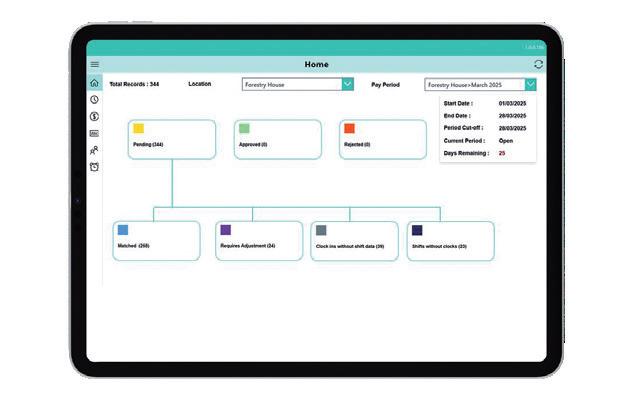
Centralise client records, communications and referral tracking.
Manage enquiries and admissions efficiently with automated workflows.
Native integration with the full Microsoft stack, including Outlook, Teams, and Power BI.
Unified data across departments for seamless client and staff management.
Facilities & Asset Oversight
Track work orders, equipment and planned preventative maintenance.
Ensure safe, compliant work environments with automated checks.
Coordinate repairs and contractor activity.

Chief Editor
Jade Evans jade.evans@cimltd.co.uk
Editorial Assistant
Ailsa Newgreen ailsa@cimltd.co.uk
Publication Manager
James Davies jamesd@cimltd.co.uk
Tel: 01795 509 112
Account Manager
Jazmine Davis
jazmine@cimltd.co.uk
Tel: 01795 509 112
Administration Manager
Natalie Woollin admin@cimltd.co.uk
Tel: 01795 509 103
Credit Facilities
Manager
Gwen Lee
creditcontrol@cimltd.co.uk
Tel: 01795 509 103
Design and Production
James Taylor james@cimltd.co.uk
Grant Waters grant@cimltd.co.uk
Marketing Manager
Lucas Payne lucas@cimltd.co.uk
Social Media Manager
Lily Lawson socials@cimltd.co.uk
Sales Director
Tom Woollin tom@cimltd.co.uk
Chief Executive
John Denning
Welcome to the April issue of Care Home Magazine. As spring breathes new life into the world around us, it’s the perfect time to focus on two key themes that contribute to the vitality and longevity of our care home communities: resident wellbeing and sustainability.
Keeping residents active is at the heart of a healthier, happier life. In this issue, we explore innovative ways to encourage movement, social engagement, and cognitive stimulation, ensuring that every individual—regardless of ability—can enjoy the benefits of an active lifestyle. From tailored exercise programmes to creative activities that spark joy, we highlight practical approaches that can make a real difference in residents’ daily lives.

Equally important is the way we care for our planet while caring for residents. Our feature on sustainability delves into ethical sourcing and the crucial role of responsible purchasing in care homes. Choosing ethical suppliers for furniture, toiletries, and everyday essentials isn’t just about environmental impact—it’s about ensuring quality, supporting fair trade, and making decisions that align with the values of care and respect that define our industry.
These themes are complimented by our regular features, including our Care Home of the Month, where we spotlight excellence in resident care, and our Essential 5, offering expert insights into key aspects of care home management.
As always, we hope this issue informs, inspires, and supports you in the incredible work you do every day. Here’s to a season of renewal, responsibility, and wellbeing!
Evans, Chief Editor

We share an interview with CarePoint 365’s Head of Marketing, Anoushka Farouk, to discover how the Avengers are shaping the future of care, and how you can be part of this exciting movement.
Looking into exercise and mobility, we speak to industry experts to deep dive into the role of physical activity in preventing health decline.
In a piece from Care Inspections UK, we share details on their recently launched new subscription service to tackle rising costs for care homes and providers.
A piece from Derek Aaronson, CEO & Founder of Hart Home Group shares details on preventing scalding in care homes.
After recently winning the Best Exterior Design title at the Design Healthcare Awards, we share Barchester Healthcare’s stunning new care home, Highfield, as our Care Home of the Month.
We explore the importance of choosing ethical suppliers for furniture, toiletries, and everyday essentials to support sustainability within care homes.


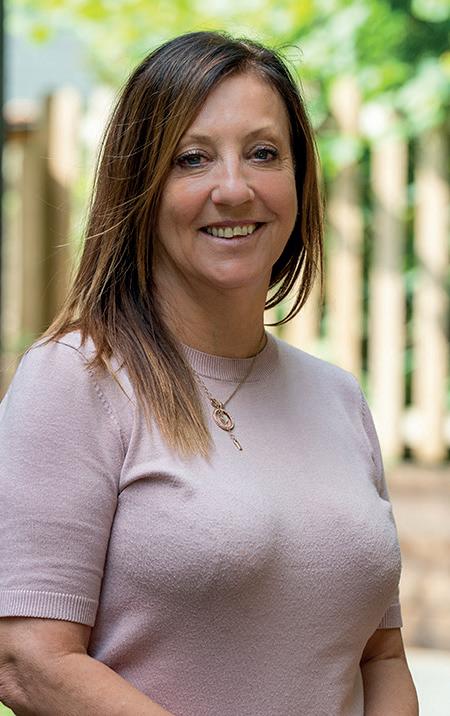

The team at CarePoint 365 believe that true innovation in care technology comes from collaboration, not competition. That’s why they launched the Care Tech Avengers—a dynamic think tank bringing together industry leaders, care tech entrepreneurs, and care providers to drive meaningful change. We share an interview with CarePoint 365’s Head of Marketing, Anoushka Farouk, to discover how the Avengers are shaping the future of care, and how you can be part of this exciting movement.
Tell us about the CareTech Avengers and its inception.
Care Tech Avengers was created in response to the many questions we seek to answer as an organisation.
CarePoint365’s founder, Sarj Radia, proudly refers to himself as a “care tech avenger” on his LinkedIn profile. Curious about what that meant, I (Anoushka, Head of Marketing at CarePoint365) asked him to explain. He shared that his mission in developing the product was to think outside the box, be bold and fearless, break through outdated systems, and create something truly revolutionary.
As an organisation, we believe that if we took the time to listen more to care providers, we could develop solutions that are truly needed—ones that tackle realworld challenges and make a
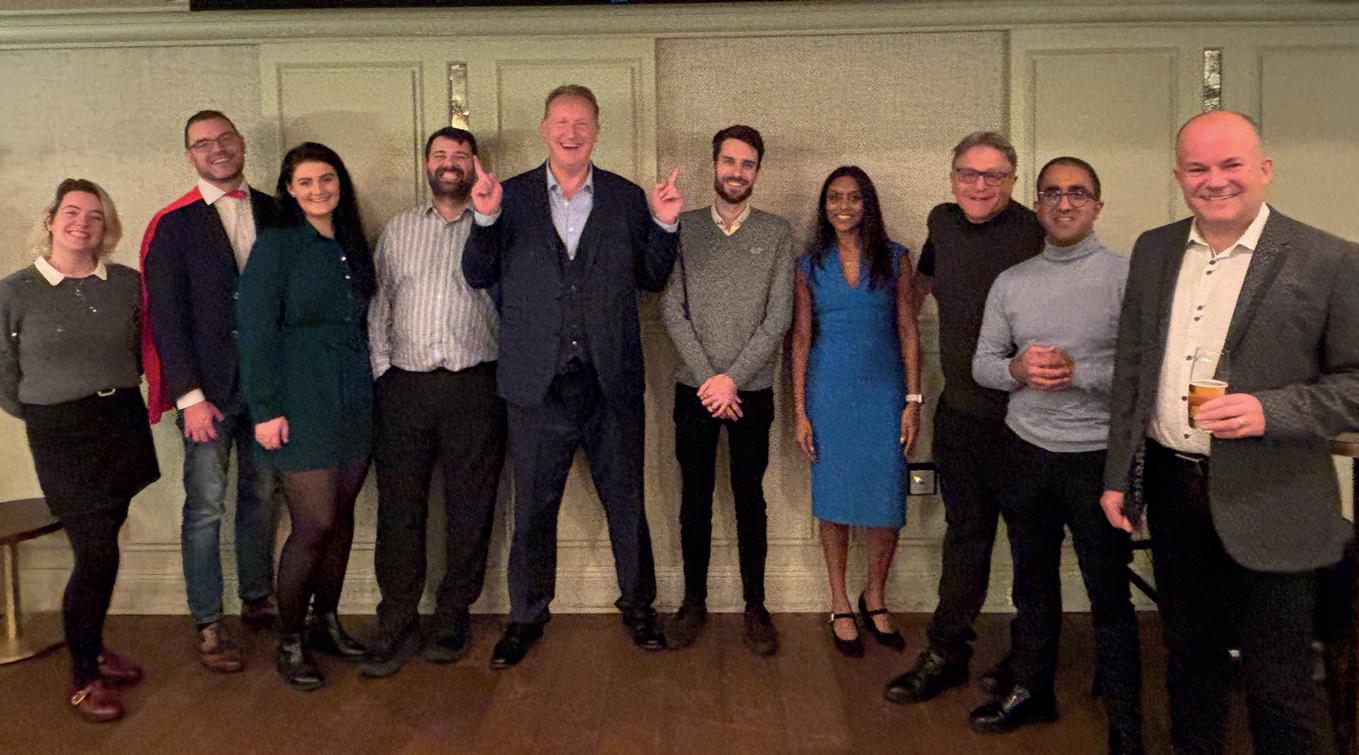
meaningful difference. That’s why we brought together other care tech entrepreneurs alongside providers into a think tank, where we could co-produce solutions, challenge the status quo, and redefine the role of technology in care.
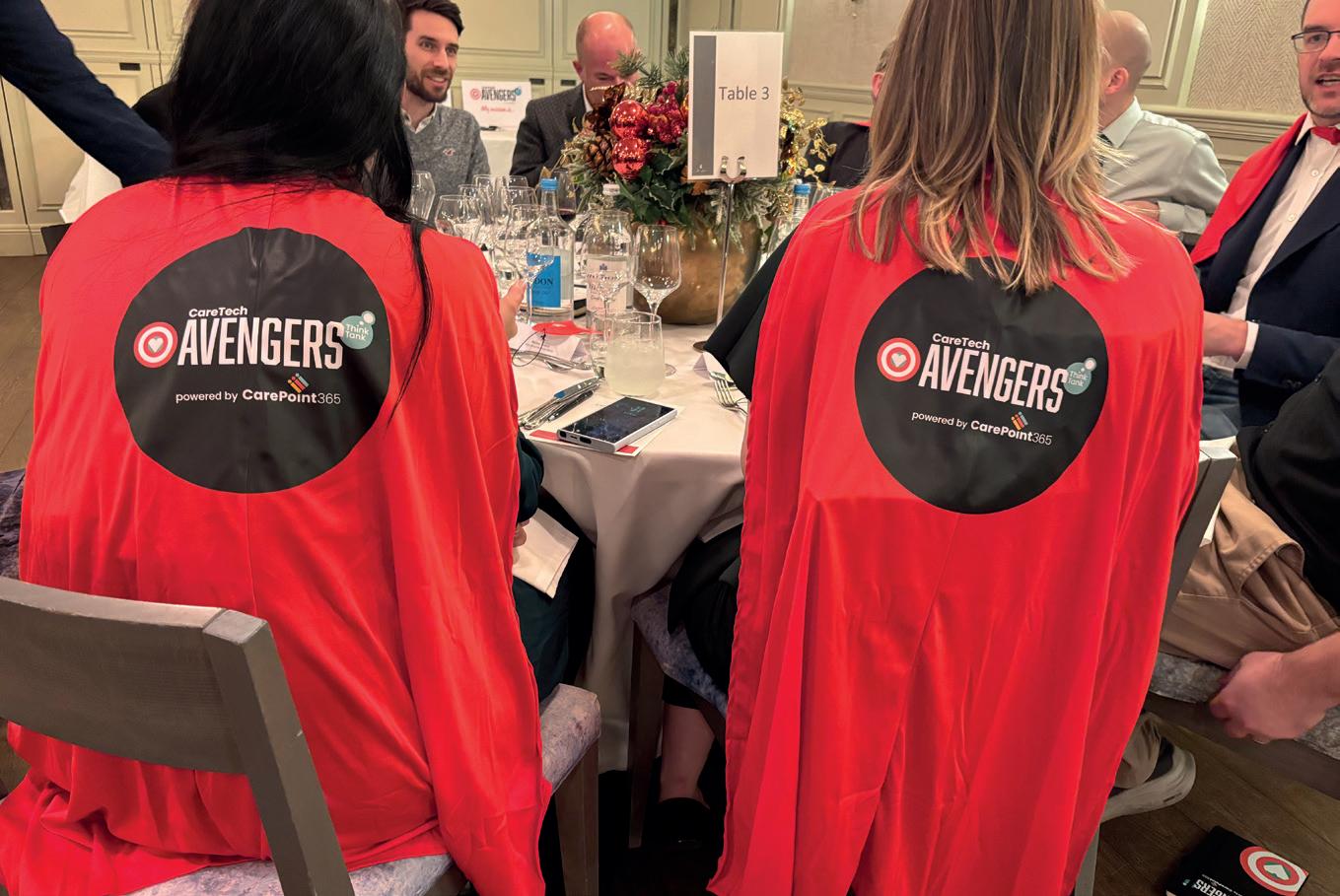
What is the sole aim of the CareTech Avengers and why is this important to you?
The aim of the project was to create a forum for collaboration and co-production. There is strength in sharing ideas, and we need to move away from a mindset of competition. Instead, we should leverage insights across organisations, working together to drive innovation. There is more than enough room for all care providers and all tech providers—by collaborating, we can create better solutions for the entire sector.
How did you choose your group of Avengers and what are their niches?
The 9 Workstreams:
• Data Sharing and Insights - Led by Geraint Thomas - Guided Innovation
• Procurement - Led by Sarj Radia
• Career Pathways - Led by Katie Thorn - Digital Care Hub
• Compliance - Led by Louie Werth
- Care Research
• Care Tech Guidance - Led by Liam Palmer - Care Tech Guide
• Recruitment/Retention - Led by Neil Eastwood - Care Friends
• HR - Sonia Rai - Nectar HR
• Digital Transformation - Led by Daniel Casson - Casson Consulting
• Staff Culture - Led by Vivien Ziwocha - Cornerstone HC
is the current mission for the Avengers and what do you have in mind
Each Avenger will lead a workstream dedicated to their mission. We aim to showcase their work at live quarterly events, while also running webinars and small roundtables in between. Every Avenger works differently, so I am not being prescriptive about how they approach their missions— they all have full-time jobs, after all! In general, each Avenger is using their mission to foster better partnerships and collaborations in their day jobs while also strengthening existing relationships. As an organisation, we value bringing people together and providing a platform for collaboration. Good things happen when we talk to one another. The missions may take on a life of their own—in fact, we have already seen an increase in the number of providers we are engaging with. It is vital to break down the barriers between providers and suppliers so that we can work together more cohesively. Shoulder to shoulder, we can drive improvements in care delivery, staff culture, and many other areas where each Avenger brings their own expertise.
What kind of change for the care sector will the work of the Avengers promote?
The sky’s the limit in terms of what we can achieve collectively—if we continue to think outside the box. Each Avenger brings a wealth
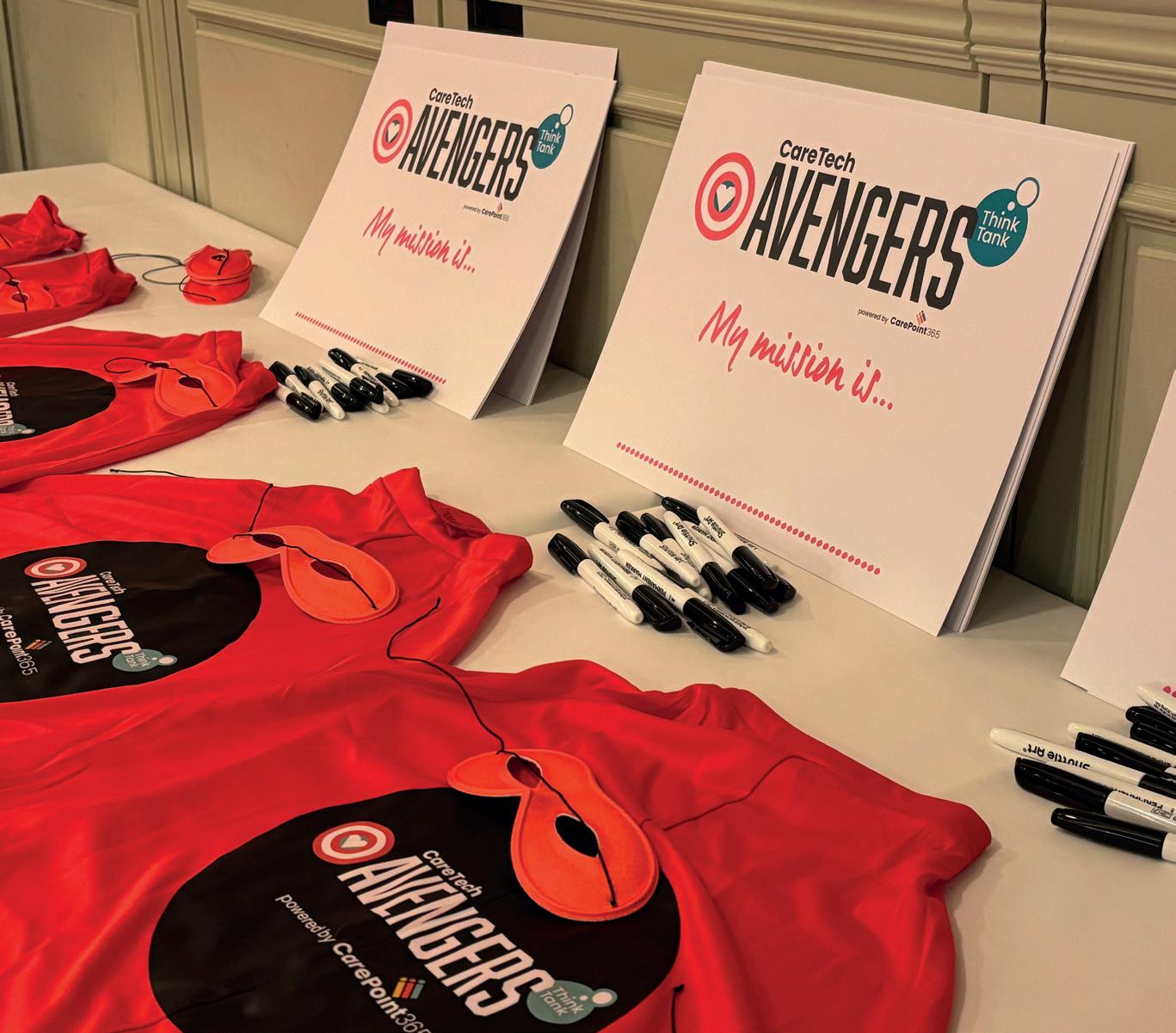
of knowledge in their field, and the events we hold help spark conversations that drive real innovation. So many great ideas have already emerged from the first two events, and this is just the beginning.
We welcome any care provider who wants to take part in one of the nine workstreams, share their passion for technology in care, or bring forward new ideas and perspectives. Whether you’re looking to contribute actively or simply stay informed, there are multiple ways to engage:
• Join the LinkedIn Group – Be part of the ongoing discussions and connect with like-minded professionals.
• Drop Us an Email – If you have a specific idea or want to collaborate more closely, reach out to us directly.
• Engage with Our Blog & LinkedIn Posts – Share your thoughts, contribute to the conversation, and help shape the future of care tech. carepoint365.co.uk
By getting involved, you’ll gain access to a network of innovators, providers, and care tech entrepreneurs who are driving real change. You’ll have the opportunity to:
• Collaborate with Industry Leaders – Work alongside experts and pioneers in care technology.
• Shape the Future of Care –Contribute ideas that could influence the next wave of innovation.
• Expand Your Network –Connect with professionals who share your challenges and ambitions.
• Gain Early Insights – Be at the forefront of discussions shaping care tech solutions.
There’s no single way to get involved—whether you’re actively participating in a workstream or simply joining the conversation, your voice matters. Let’s work together to challenge the status quo and drive meaningful change in the care sector!
Honing in on strategic vision and leadership, we sit down with Aria Care’s CEO, Caroline Roberts, as she shares insights into how the brand fosters a positive workplace culture, maintains the highest standards of care, and ensures sustainable growth.
How does Aria Care foster a culture where employees feel valued and motivated?
At Aria Care, our success is built on its people. Since its launch in December 2022, we have prioritised professional development and colleague well-being, ensuring that our people remain engaged and empowered.
We are committed to driving our people agenda, with the firm belief that our people are truly our biggest asset. The agenda covers areas such as engagement, equality and diversity and continuous learning. This is equally important to enable us to attract and retain top talent whilst encouraging a culture of inclusion. We’re committed to building a positive culture where colleagues have the skills, confidence, and knowledge to perform at their best—and ultimately, provide the highest quality care for our residents.
That’s why we launched our Inspiring Leaders and Emerging Leaders Development Programmes in 2024, which has been a huge success in supporting people grow in confidence through strengthening their leadership skills and understanding of business operations, with a focus on communication, excellence in quality, strategic thinking, and commercial performance. The programme is already making a real difference and we have seen three internal promotions already.
Similarly, our Chef Academy, in partnership with Lifetime Training, has seen continued success, with the launch of its third cohort in just 12 months. The academy provides

colleagues with the opportunity to gain nationally recognised qualifications, supporting the development of individuals and homegrown culinary talent.
Giving people a voice is key to empowerment, listening and acting to make changes that benefit our residents, and support our company growth.
Quality: What key initiatives are in place to ensure the highest standards of care for residents?
We have always been clear from inception that we don’t just provide care—we care from the heart. We dedicate ourselves to truly understand the people who
call our communities their home. By listening and forming solid relationships we get to know the person which enables us to provide compassionate, person-centred care to every resident and this is reflected in our core values, respect, empathy, excellence, collaboration and integrity.
We believe innovation can enhance well-being, and our partnerships reflect that. Through Burns Gym, residents enjoy virtual fitness sessions that boost mobility, strength, and social engagement. Our collaboration with SocialAbility, The Alzheimer’s Society, and Sport England has seen successful implementation of the Happiness Programme, using interactive light technology to improve cognitive
and physical health—an initiative even featured on BBC Morning Live. We’re also proud to contribute to the VIVALDI Social Care Project, strengthening infection prevention measures across our homes.
As we continue to grow as an organisation, we are ensuring our new builds are fit for the future, our Director of Quality and Governance is currently working with a number of technology providers trialling various options that will enable independence and support safe care.
Dining is an essential part of wellbeing, and our hospitality and food frameworks ensure mealtimes are both enjoyable and accessible. Our chefs work closely with residents to accommodate preferences and dietary needs, including IDDSI training for those requiring specialised diets. Thoughtful touches like adaptive crockery further support independence for residents with visual or dexterity challenges.
In just 2 years, we’ve invested £21 million pounds in transforming some of our homes—upgrading communal spaces and bedrooms and enhancing facilities like hair salons and bistros to create warm, welcoming environments. We are now planning our next round of refurbishment projects for 2025/2026.
delivering
Resident and family satisfaction serves as a crucial measure of our success. Aria Care currently holds a 9.6 rating on carehome.co.uk, reflecting the consistently positive feedback from our residents and their loved ones.
In 2024, Aria Care was shortlisted for 22 national awards, reflecting our strong focus on people, and quality. Notable wins included Katie Smith, Head Chef at Magna Care Centre, who was named Chef of the Year at the National Care Awards, and Belmont House
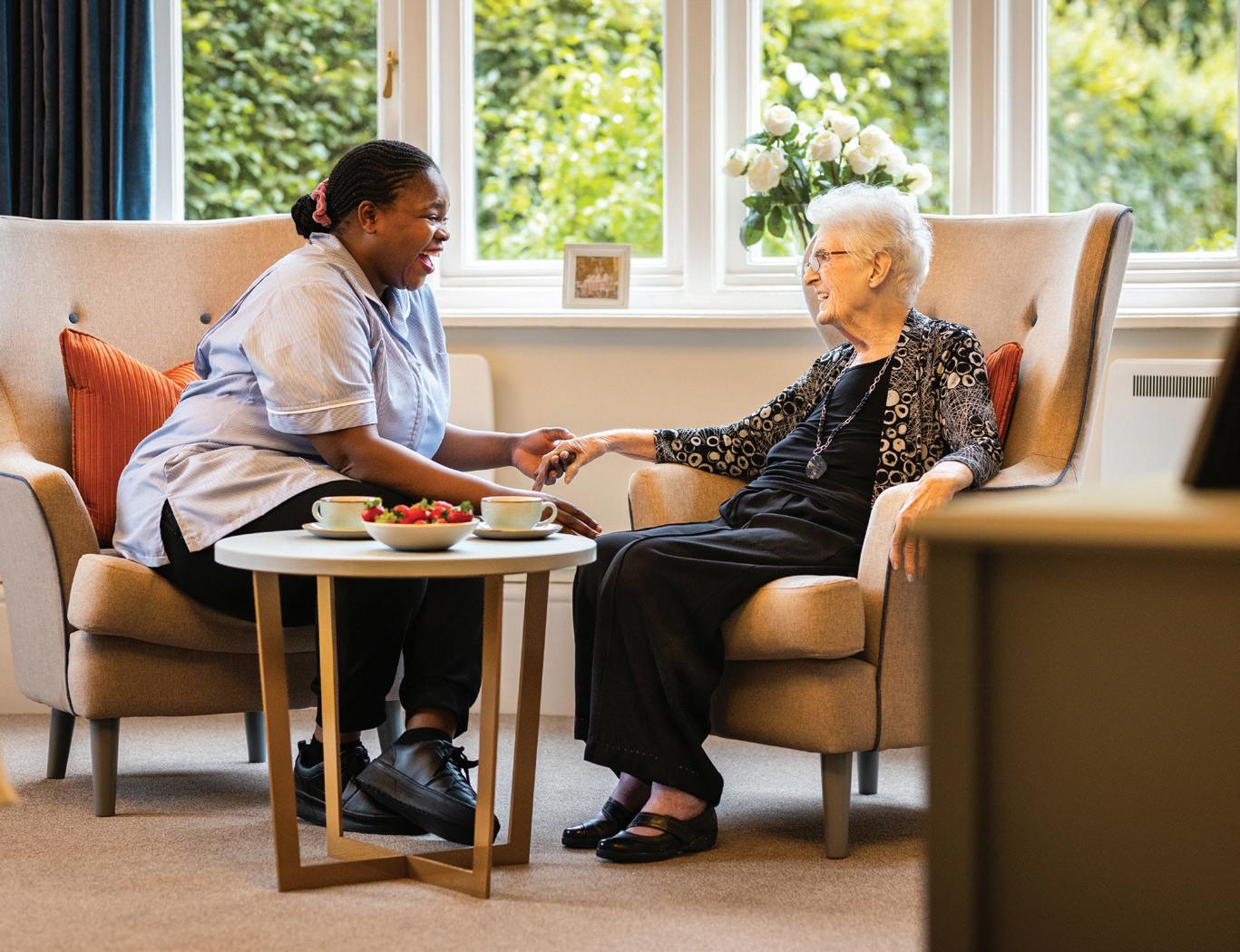
Nursing Home, which won Care Team of the Year at the Caring UK Awards. These accolades highlight the hard work and dedication of our teams and the impact of our ongoing investment in both care and colleagues.
As all operators in this sector, we track key performance indicators (KPIs) to ensure we are growing and that our indicators evidence traction in the right areas, such as care quality, falls reduction programmes, training statistics, retention, H&S and occupancy growth.
We feel that by being innovative, continuously investing in our people, care, and facilities, we ensure that we remain a leading care provider of choice.
Can you share an example of a challenge Aria Care faced and how navigatedleadership it?
One significant opportunity Aria Care faced was the recent acquisition and merger of Future Care Group—an exciting period of change and growth as our first acquisition, but also one that required careful navigation. We recognised that this transition could feel daunting for our new colleagues, residents, and their families.
To ensure a smooth integration, the leadership team implemented a detailed, seven-month integration plan that prioritised open communication and collaboration with our new teams. Its never easy to integrate a portfolio looking at systems across two companies and making decisions on which systems need to remain, we took a very balanced approach to understand which best placed us for success for the growing portfolio, we engaged with team members for views throughout this period to ensure they felt included. Effective communication was key to the successful integration.
What is your long-term vision for Aria Care, and how do the pillars of success shape that vision?
As Aria Care looks to the future, we are focused on continued growth, innovation, and excellence in care, with plans to develop six new, purpose-built care homes designed to meet diverse care needs. Beyond organic growth, Aria is actively exploring opportunities for the next acquisition, reinforcing its commitment to strengthening its portfolio and expanding its position in the market.
ariacare.co.uk

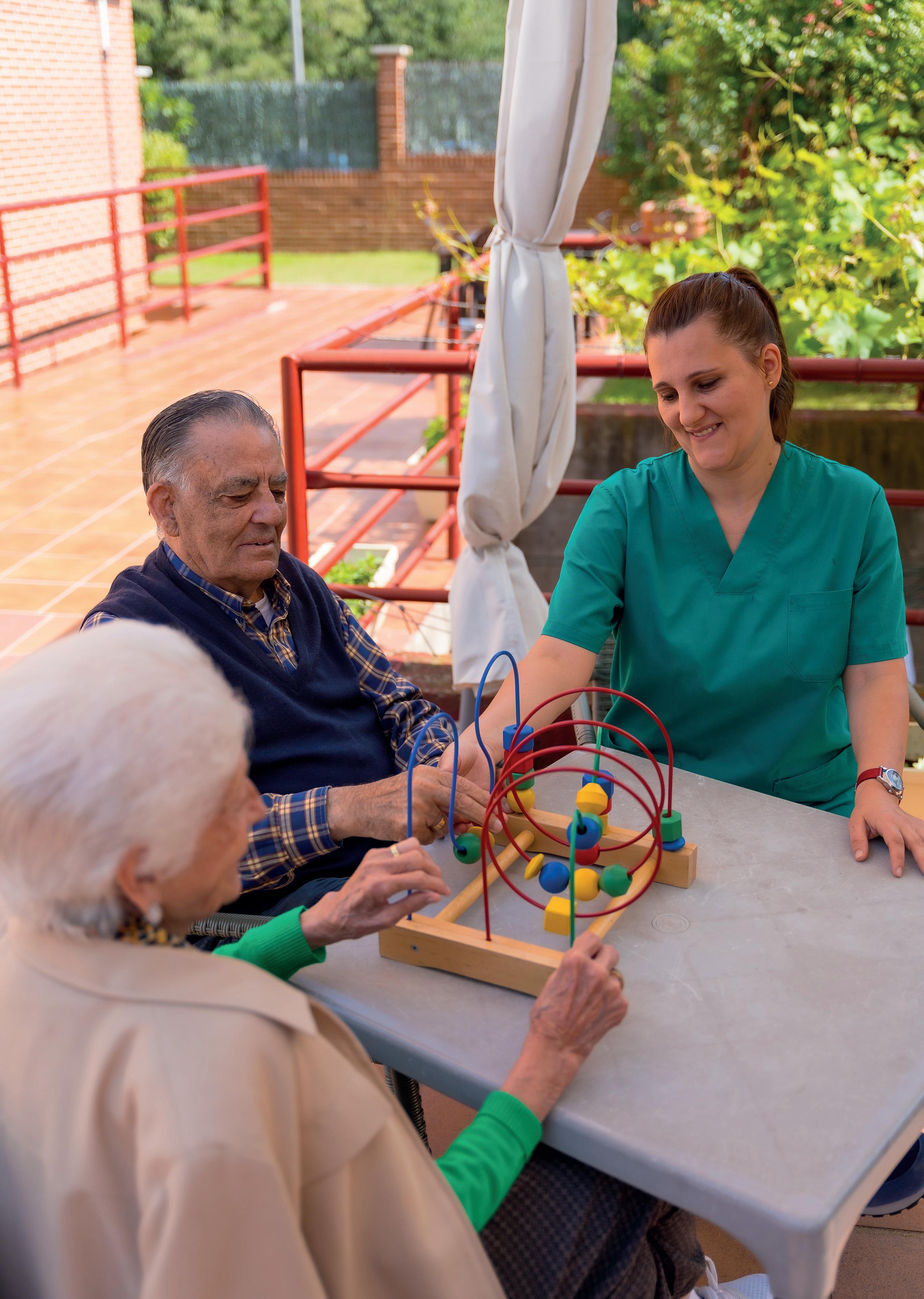
Incorporating meaningful and accessible activities into daily life is crucial in care homes, promoting physical, emotional, and social wellbeing. This month, we explore chair yoga, a gentle yet highly effective practice that can bring numerous benefits to care home residents.
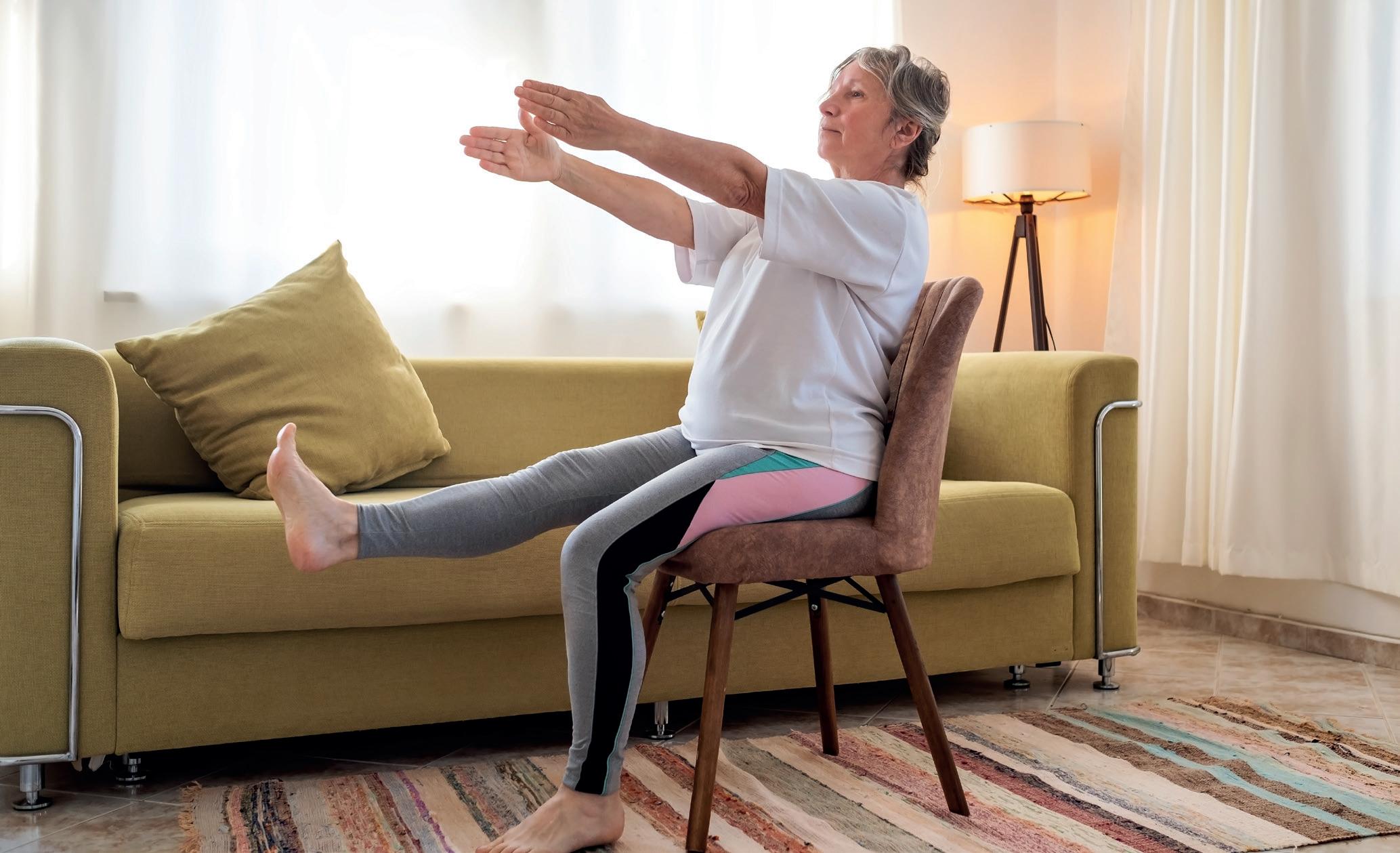
By adapting traditional yoga postures to be performed while seated, chair yoga offers a safe and enjoyable way for older adults to stay active, reduce stress, and enhance their overall quality of life.
Chair yoga amongst care home residents can bring a plethora of benefits, including enhanced physical mobility and strength. Regular participation in chair yoga helps maintain joint flexibility, improves circulation, and strengthens muscles. The gentle movements and stretches are designed to accommodate varying levels of mobility, making it an excellent choice for those with limited movement or chronic
conditions such as arthritis.
Chair yoga incorporates mindful breathing and relaxation techniques, which can help reduce anxiety, depression, and stress. The practice fosters a sense of calm and encourages positive mental health, crucial for residents who may experience isolation or cognitive decline.
Group chair yoga sessions provide an opportunity for social interaction, fostering a sense of community within the care home. Sharing a structured activity can help residents bond, boosting morale and reducing feelings of loneliness.
Introducing chair yoga also improves balance, meaning falls can
be reduced. Falls are a common concern in care settings, but chair yoga enhances coordination and balance through controlled movements. Strengthening core muscles and improving posture can contribute to better stability, helping to prevent falls.
One of the greatest advantages of chair yoga is its accessibility. It can be adapted for individuals of all abilities, including those in wheelchairs, making it an inclusive activity that everyone can participate in and enjoy.
Many care homes across the UK have already implemented chair yoga with remarkable success. Staff report that residents look forward to sessions, with noticeable
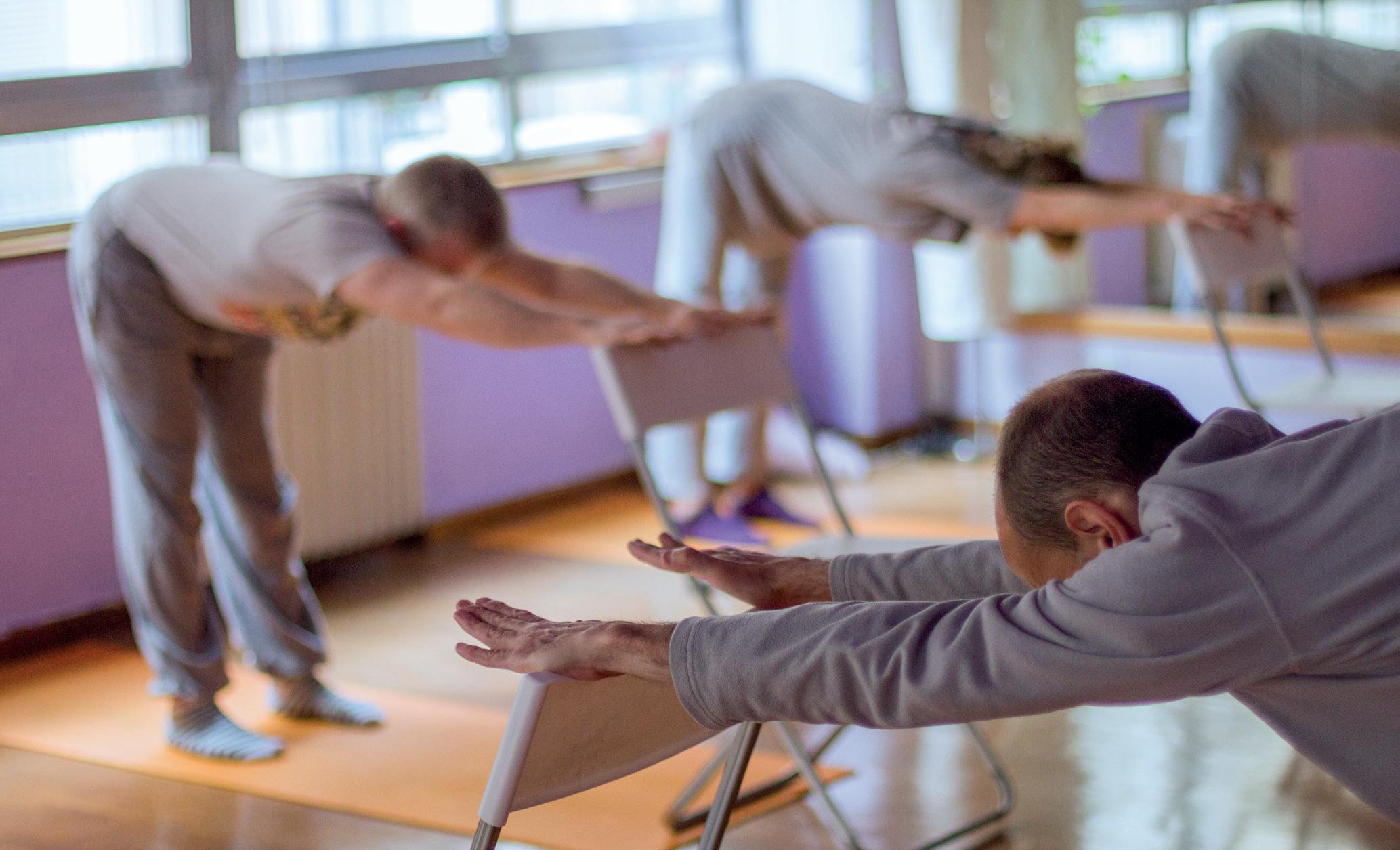
improvements in mood, mobility, and overall wellbeing.
Chair yoga is a simple yet powerful activity that can transform the lives of care home residents.
By introducing this accessible form of exercise, care homes can
promote physical health, mental well-being, and social connection in an inclusive and enjoyable way. Whether led by trained professionals or enthusiastic staff members, chair yoga is an adaptable and rewarding addition
to any care home’s activity programme.
Why not introduce chair yoga in your care home this month and witness the benefits firsthand? Your residents—and their wellbeing—will thank you for it!
A quiet, well-lit room with enough space for residents to sit comfortably is ideal. Ensure that chairs used are stable and without wheels to provide maximum support.
2. Choose a Trained Instructor
If possible, invite a certified chair yoga instructor to lead sessions. Alternatively, care staff can be trained in basic chair yoga techniques to guide residents through safe and simple movements.
3. Start with Gentle
Begin with easy stretches and
breathing exercises to help residents ease into the practice. Movements such as seated catcow stretches, gentle side bends, and ankle rotations are great starting points.
Incorporating deep, controlled breathing into each session promotes relaxation and oxygenates the body. Teaching residents to focus on their breath can also help improve concentration and emotional regulation.
A 20-30 minute session is often sufficient to provide
benefits without overwhelming participants. Use soothing music or guided instructions to create a relaxing atmosphere.
Adding an element of fun, such as storytelling, visualization, or incorporating props like scarves or stress balls, can keep residents engaged and entertained.
Regularly check in with residents to gather feedback and adapt sessions to their comfort levels and needs. Some may prefer shorter sessions or different postures, so flexibility is key.
New inspection service launches to counter rising costs facing the care sector.

Care Inspections UK (CIUK), the UK’s only accredited inspection body for care homes, has launched a pay-as-you-go inspection service aimed at helping care homes improve quality, performance, risk management, and regulatory ratings in the face of the increasing costs affecting the social care sector.
To ease cash flow during rising National Insurance and wage pressures, the subscription service offers care homes structured, evidence-based support to navigate compliance challenges effectively.
Designed to accommodate a range of operational needs and budgets, the three-tiered subscription model, Silver, Gold, and Platinum, offers varying levels of inspection frequency, expert guidance, and action plans tailored to each home’s requirements.
Under the Silver plan, care homes receive an annual comprehensive inspection carried out by experienced, accredited professionals. The resulting detailed report includes a full breakdown of every aspect of the care home, along with easy click-through access to relevant standards, regulations, and best practices. An action plan is provided to cover any non-conformances, with ongoing review and support to ensure continuous progress. Homes that meet the required thresholds will be awarded a certification, signifying excellence in care provision. Additional benefits include advisory support before and after inspections, access to exclusive online events and forums for networking and best practice sharing, and participation in CIUKled publicity initiatives designed to highlight high standards of care. CIUK also guarantees that,
by fully implementing all aspects of the action plan, homes will see improvements in their regulatory ratings (CQC, CI, CIW, RQIA), giving providers added assurance that their investment in quality improvement will yield tangible results.
The Gold tier builds upon the Silver plan by offering additional regulatory and commissioning pre-inspection tools. This deeper level of service helps care providers prepare more effectively for formal inspections, giving them an edge in demonstrating compliance with industry standards. Gold members benefit from an in-depth assessment of their readiness for external regulatory visits, with tailored support that helps anticipate potential concerns and address them proactively. In addition to all the features of the Silver package, Gold subscribers receive a more comprehensive level

of preparatory guidance, ensuring that homes meet and exceed industry expectations.
The Platinum package is the most comprehensive offering, providing two inspections per year to ensure that care homes maintain consistently high standards throughout the year.
Alongside the core benefits found in the Gold and Silver plans, Platinum members gain access to detailed analysis of inspection trends, helping care homes identify recurring issues and implement long-term solutions for sustained compliance and excellence.
Additional advisory support is

extended to Platinum members, ensuring they have ongoing expert guidance in regulatory matters, risk management, and quality improvement. This elite tier is particularly beneficial for larger care providers or those undergoing transitions, such as ownership changes or expansion, who require higher scrutiny and support.
Kevin Groombridge, chief executive at Care Inspections UK, said: “Our mission is to raise standards in the care sector by providing accessible, evidencebased support. This subscription model equips care homes with the tools to enhance compliance and deliver the highest-quality care.
With rising costs placing additional pressure on the sector, for only a couple hundred pounds a month, our service offers expert guidance and regular inspections to help providers navigate these challenges. By following our structured action plan, care homes can guarantee an improvement in their regulatory ratings, ensuring better outcomes for both residents and staff.”
careinspections.co.uk
With experts on hand, we delve into the role of physical activity in preventing health decline amongst care home residents.
Encouraging exercise and mobility in care homes is essential for residents’ physical and mental wellbeing. Regular movement helps maintain strength, flexibility, and independence while boosting mood and social interaction.
From gentle stretching to chairbased exercises and outdoor walks, integrating activity into daily routines can enhance quality of life and reduce the risk of falls or illness. In this article, we explore practical strategies for keeping residents engaged, active, and thriving.
Bailey-Stephen Greetham-Clark, Founder of Be Great Fitness, recognises that exercise can also fosters social engagement, reducing feelings of isolation and loneliness, along with the fact, mentally, it helps with cognitive function, reduces anxiety and depression, and promotes overall emotional wellbeing.
Exercise plays a key role in maintaining bone density, managing joint stiffness, and supporting overall brain health and research suggests that regular physical activity may contribute to better cognitive function, which could have a positive effect in reducing the progression of dementia.
Bailey agreed and said, “Studies show that regular physical activity in care homes leads to improved mobility, fewer falls, and enhanced cognitive function.”
Looking at what types of exercises are most beneficial for elderly residents, especially those with mobility issues, Bailey advises implementing seated exercises, resistance band training, balance exercises, and gentle stretching. “They help maintain strength and

mobility while being accessible to all ability levels,” he added.
You may struggle with residents who are sometimes withdrawn and relucatant to participate in exercise. In order to combat this, Bailey advises making sure the sessions are, “fun, social, and pressure free.” He revealed that group activities, music, and incorporating personal interests can help engage reluctant participants. “Positive reinforcement and setting small, achievable goals also work well,” Bailey finished.
Palma Palmer, Founder of Harmonywellhealth, PT Senior Fitness Expert, Reiki Master and Confidence & Wellbeing Coach believes that regular exercise amongst care home residents is “imperative for their mental, physical and emotional wellbeing.”
Exercise has been known to also help prevent or slow down age-related conditions,

including osteoporosis, arthritis, and dementia. Palma explained, “Exercising improves blood flow to the brain and activating the lymphatic system improves immunity, reduces swelling, inflammation, absorption of nutrients, and removes waste more efficiently, all of which aid antiaging.”
In terms of the types of exercises that are most beneficial for elderly residents, especially those with mobility issues, Palma recommends introducing strength training, resistance band workouts, seated stretches or yoga, boxing, walking, swimming and Thai Chi.
Looking to the future of exercise, specifically in care homes, Palma expects to see more variety of exercises, along with personalised and tailored programs and added, “We will see more residents wearing devices to track activity, or using
their phones and I expect Virtual Reality (VR) to grow in care homes, aiding physical, cognitive and emotional wellbeing.”
At Barchester’s Hickathrift House care home, the exercise programme is very diverse in order to interest residents of all abilities. On a monthly basis, the home has three different exercise instructors visit to host exercise classes including a dancercise strength training class, an armchair yoga class and a fitness coordination class which is primarily for those living with dementia. On a weekly basis, the Activities Coordinators organise three specific exercise games or classes such as carpet bowls, hand exercises, darts, hoopla, to name a few. Kat Colangelo, Senior Activities & Life Enrichment Coordinator at Hickathrift House, explained that these take place in communal areas and in some residents’ individual bedrooms.
“The home also arranges a variety of outings to boost physical wellbeing such as walks around the park, going ten-pin bowling and fishing trips,” added Kat.
In order to encourage participation at Hickathrift House, the Activity Coordinators discuss the residents’ favourite sports when younger and then organise a themed exercise game around this for instance tennis would be turned into balloon tennis or hockey would be with a soft puck. Kat explained that by connecting to the residents’ life history, it helps spark memories and continues that joy they had, this boosts their confidence in joining in physical activities. “Additionally, we host a physical wellbeing competition on a weekly basis, such as a darts competition and the winner receives a prize of their choice. This not only boosts their physical wellbeing but also provides a sense of achievement and encourages socialising,” said Kat.
Recognising that ability can vary from resident to resident, Kat said, “It’s important to understand that a resident’s engagement may not be how we might engage but that doesn’t mean they are

not engaging.” For instance a five minute burst of exercise might incorporate darts for one residents as they’re able to hold the darts and aim at a dartboard whereas for others the care team would organise balloon toss, as it’s slower and more gentle, therefore easier to engage with.
Kat advises trying different games with a lot of encouragement, communication and patience. For residents with advantaged dementia, balloon themed games work very well at Hickathrift as Kat explained, “The slow balloon helps the resident react in their own time as well as a small touch results in the balloon moving. This provides them with a sense of achievement.” These balloon games can be themed from balloon tennis to balloon bucket toss.
ATADesigns and Wallsmiths (printers) have been working in conjunction on Care Home projects since 2018 and were recently commissioned by the interior design firm White Space Living to create a bespoke gym mural for one of Macc Care’s care homes’ Sutton Rose in Boldmere.
The inspiration behind the mural design was to bring the outdoors into the interior space, creating a relatable, calm and peaceful design to encourage and promote exercise. The mural features silhouettes of people enjoying gentle exercises in the park or countryside.
Annette Taylor-Anderson, Creative Director/Designer at ATADesigns, said, “The gym mural was created with the residents’ wellbeing in mind to help and encourage them while exercising within the space.
“With the help of White Space Living, we collectively chose light, calming sunset colours as the inspiration behind the backdrop to promote a relaxed meditative and potentially stimulating space.”
The mural aims to bring a peaceful and harmonious atmosphere into the care home’s space while encouraging gentle mobility and exercise each time the residents use the room. Annette added, “Where some residents are not able to go outside to exercise, the mural brings the outside in, so the residents feel as though they aren’t missing out.”
Encouraging exercise in care homes is vital for residents’ physical, mental, and emotional wellbeing. From seated exercises to outdoor walks, tailored programs help maintain mobility, boost mood, and foster social connections. Experts emphasise making activities engaging and accessible to all ability levels, ensuring participation through fun, themed sessions and positive reinforcement. As care homes embrace innovation, including wearable trackers and VR, the future of elderly fitness looks promising.
WIN an all-expenses-paid afternoon tea party with a magician for your care home by following the steps below!
Lakeland Dairies has proudly launched a new, national tea-themed competition designed to spark joy and engagement in UK care homes.
The competition is centred around Lakeland Dairies’ culinary cream, Millac Gold Double. A versatile and reliable ingredient that enables care chefs to easily prepare consistent and delicious dishes.
Each entrant to the competition will receive a free Millac Gold Nutrition & Hydration Pack. The pack is designed to enhance the afternoon tea experience and keep residents nourished, active, and hydrated during events like ‘The Global Tea Party’ and other key moments throughout the year.
And to bring a little extra joy to mealtimes in the care home setting, the pack includes a host of individual and group-based games and crafts like a ‘spot the difference’ challenge and a tea-themed crossword. Meaningful activities that play a key role in improving the
“Good food plays a crucial role in ensuring residents’ wellbeing, positively impacting their minds and bodies. By fostering a homely environment where residents feel cared for and valued, our campaign highlights the importance of nutrition and hydration in later life, while ensuring mealtimes offer a moment of comfort and joy.”

wellbeing of care home residents by sparking joy and conversation.
An all-expenses-paid afternoon tea party hosted by Millac, complete with delicious treats and a live magician! A special prize that is set to entertain and spread joy amongst the residents of the winning care home.
Lakeland Dairies Foodservice is a 100% farmer-owned Irish cooperative that has been producing nutritious milk for over 130 years. From lush green pastures, it offers a trusted range of dairy products for chefs across the care sector, including its culinary cream Millac Gold, which is the perfect solution for whipping, cooking and pouring.
Entry to the competition is simple.
Whether you’re a chef or an activity co-ordinator in a UK care home, all entrants need to do is:
• Purchase Millac Gold Double (1L) from any UK catering or foodservice wholesaler, in depot or online.
• Include a receipt of your wholesale purchase when submitting your competition entry form by scanning the QR code opposite.
After completing the competition entry form, entrants will be entered into the exciting prize draw, plus receive a free Millac Gold Nutrition & Hydration Pack.
Entries to the competition close on Wednesday, 30 April before midnight. Please reach out to read the full competition terms and conditions.





Five practical ways to enhance quality of life in residential care, by Gemma Christie, Business Account Manager, Miele Professional.
Quality of life is the foundation of exceptional care. For care home managers and professionals, ensuring residents feel independent, engaged and valued is key to creating a positive environment. It can also provide a sense of purpose and belonging to elderly individuals, changing their outlook on maintaining their independence. But with evolving industry challenges, including staff shortages, regulatory demands and rising expectations, how can care homes maintain and enhance quality of life for residents?
A strong care home culture is built on respect, dignity, and personalisation. Small yet meaningful actions, such as recreating familiar settings, supporting hobbies, or providing pet therapy, can significantly impact wellbeing. Encouraging staff to prioritise personal connections ensures residents feel heard and valued.
Quality care starts with a welltrained, motivated workforce. Yet, with no mandatory qualifications required for care workers, many enter the profession with limited training. However, there are many programmes available to help staff develop skills in dementia care, communication, and engagement techniques. This includes training offered by well-known charities such as Alzheimer’s Society , organisations like Skills for Care and even the local council. Investing in ongoing training improves staff confidence and competence, ultimately benefiting residents.
Recognising and rewarding staff can improve job satisfaction. Strategies such as flexible working arrangements, employee recognition schemes, and professional development opportunities help reduce turnover. Whereas tools such as digital care management systems, can

also ease workloads and increase resident interaction.
Safety and hygiene are critical in any care setting. Ensuring equipment, facilities, and living spaces remain clean and wellmaintained is a fundamental requirement for quality of life. Care home managers should conduct regular safety audits and encourage staff to report maintenance concerns proactively.
The right equipment can significantly impact both resident independence and staff efficiency. Laundry management, for example, plays a crucial role in infection control and resident autonomy. Investing in commercial-grade solutions that offer user-friendly controls and compliance with hygiene regulations can enhance resident wellbeing and support carers in their roles.
Quality of life in care homes extends beyond meeting basic needs—it’s about creating a meaningful, fulfilling environment. By adopting a people-first culture, prioritising staff development, maintaining hygiene, and leveraging the right equipment, care homes can offer not just a place to live, but a place to thrive.
Discover how Miele’s 360 PRO approach can enhance your care facility. Explore solutions here: www.miele.co.uk/p/retirementcare-homes-4053.htm

We explore the topic of design for care homes and hear from Russell Pillar, founder, Interiors by Amara Hammond, who reveals ways to refresh interiors while meeting every requirement - budget, aesthetics, practicality, compliance and sustainability.
Creating a comfortable and welcoming environment in a care home doesn’t have to come with a hefty price tag. With the right support, it is possible to find design strategies that tick all the boxes – enhancing both aesthetics and functionality while delivering long-term value and sustainable interiors within realistic budgets.
It is with these goals in mind that seasoned care industry interiors consultant Russell Pillar launched his business in 2020, at the height of the Covid-19 pandemic. It quickly became established as a trusted partner to large care home groups and independent homes seeking to create outstanding interiors that blend practicality, comfort and style.
Russell explains: “We pride ourselves on working closely with each operator to understand their vision and work out the best way to deliver it, typically within constrained budgets. Many care homes have had past experiences of sourcing low-cost interiors themselves from different suppliers on an ad hoc basis, and they know that this doesn’t lead to the best outcomes for care or design, let alone the environment.
“By leveraging our team’s expertise in specialist interiors, they save time and achieve a more coherent, design-led approach –which ultimately results in their budget going further,” he adds.
From a care perspective, there are many aspects to be taken into account. Upholstery must be commercial-grade and waterproof; chairs will often need to have reinforced frames while providing pressure relief; bathroom floors

will need to be anti-slip; specialist acoustic flooring can help to manage noise levels in lounge areas; and furniture should have rounded corners for safety.
Russell and his team find that most care homes are surprised by the aesthetic appeal that can be achieved while still meeting these practical requirements.
For instance, a popular choice when it comes to safety flooring is Altro’s adhesive-free range (see image). Using gravity alone, with no need to stick them in place, the floors require far less labour to fit, meet all compliance and safety
requirements for care settings, offer a great choice of modern, designled finishes – and boast impressive sustainability credentials.
Another example of a specialist interior that combines style and comfort with durability, hygiene and best practice compliance is Sileather sustainable coated fabrics (see image). Suitable for upholsteries, wall panels, and other interior surfaces, these innovative fabrics can be sanitised with disinfecting cleaning chemicals while maintaining their highperformance properties. This sets them apart in the care sector where
most fabrics break down when disinfected and become unsuitable for infection control. How many times have you seen chairs dumped in skips in the grounds of a care home? The frames are likely to be sound but the fabric has perished. Some products such as specialist coated fabrics are a little bit more expensive than many of the upholsteries typically used in the care sector, but this will be far outweighed by the increased longevity of the furniture. Ultimately this makes them a much more affordable and practical long-term choice.
However, it’s not the case that specialist furniture, flooring and fabrics are always more expensive than other options. In fact, a care home operator in Shropshire told Russell’s team how they’d known sofas from high-street retailers last just six months, plus they weren’t flame-retardant to the required Crib 5 standard. They worked with Amara Hammond to identify the care needs of new sofas, considering how those needs would be met by the properties of the fabrics and frames. New sofas that were chosen with reinforced frames and fully wipeable upholstery which were also more comfortable and less expensive than the high street alternatives.
Russell also points out: “If you want to achieve the best in an interior finish for your care home, but you don’t immediately have the budget for it, there are some great finance-lease options available. This is a service that increasing numbers of care providers are utilising to good effect. This way you can achieve the look and feel you want without compromising on residents’ care, wellbeing and lifestyle.”
Creating a comfortable and welcoming care home environment that significantly enhances the experience for residents and carers does not require a limitless budget—rather, it requires strategic planning, thoughtful design choices, and the right balance between aesthetics and practicality.
amarahammond.com


A vital solution for care homes from The Stair Climbing Company.
When mobility challenges arise in care homes, ensuring safe and dignified movement for residents is paramount. For over a decade, The Stair Climbing Company has been a trusted partner, working with the largest care groups and hundreds of independent care homes across the UK to provide Stair Climbers as a vital solution.
Care homes, particularly those with single-lift facilities, face significant challenges when lifts undergo maintenance or unexpected breakdowns occur. A lift failure can result in residents being confined to one floor, limiting their access to communal areas and essential services. This is where Stair Climbers offer a practical, immediate solution.
Care UK, for example, frequently reaches out to us when replacing lifts in single-lift homes. When a building only has one lift, a failure can leave residents stranded. The project managers proactively identify at-risk properties and secure Stair Climbers in advance to ensure continuous mobility for residents. Similarly, when scheduled lift maintenance is planned— often lasting between 8 to 12 weeks—care homes reserve Stair Climbers for the duration, ensuring that residents can move freely throughout the building.
Stair Climbers serve as an invaluable emergency resource, akin to an additional emergency service. When a lift breaks down, we swiftly assess the situation,

identifying the number of residents affected and the staircase structure to determine the most suitable Stair Climber. The equipment is then deployed on a weekly hire basis, ensuring immediate accessibility for residents.
For planned lift maintenance, we coordinate training sessions for staff, equipping them with the necessary knowledge to operate the Stair Climbers safely. We implement a ‘train-the-trainer’ approach, ensuring that multiple staff members can train others throughout different shifts. This seamless integration guarantees residents’ needs are met without disrupting their daily routines.
While many care homes hire Stair Climbers on an as-needed basis, some opt to purchase them for long-term use. These Stair Climbers are either stored on-site or maintained at our warehouse, where they are serviced, repaired, and dispatched whenever required. This eliminates the risk of lost or damaged equipment while
ensuring that essential accessories and chargers remain intact.
Having a Stair Climber as part of a care home’s contingency plan is a proactive step that is highly regarded by the Care Quality Commission (CQC). Implementing this strategy enhances compliance with safety regulations and demonstrates a commitment to resident wellbeing.
With over 130 hires in the last 12 months, The Stair Climbing Company is at the forefront of supporting care homes with innovative mobility solutions. Whether for emergency use, planned lift maintenance, or longterm contingency planning, Stair Climbers provide care homes with a reliable and cost-effective way to ensure residents’ independence and dignity.
For more information on how Stair Climbers can benefit your care home, contact The Stair Climbing Company today. thestairclimbingcompany.com

Insurance you can trust, made

We understand that the nature of the care industry can be unpredictable. We want to make sure you’re covered when it matters most. Our industry experience means we know what types of risks you face, so speak to us today to discover how we can keep your business protected. At Phoenix we work with you to tailor a sustainable solution to your insurance to deliver improved risk management and savings.

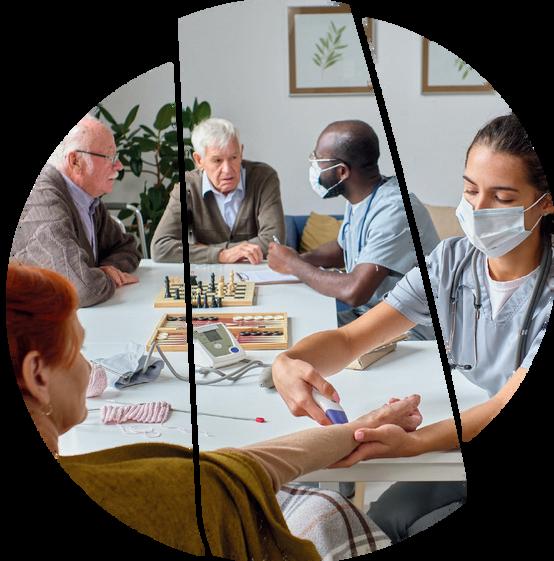



TNT Sports’ major league line-up gives residents every reason to get together to share the thrill of live sport.

There’s nothing like live sport to bring people together, no matter what stage of life they’re experiencing.
The thrill of a winning goal, a gripping Grand Slam tennis match or the best in the business battling it out on the green baize never grows old.
Sharing passions, celebrating triumphs and enjoying your team or your hero’s success is always better with company.
TNT Sports has a year round calendar of live events to ensure care home residents are never short of entertainment.
In fact, the live sport coming up is a great way to offer residents a
point of difference and could well be a deal-breaker for prospective clients – making their new home feel all the more welcoming and familiar.
First up, football.
The national game is celebrated in all of its glory on TNT Sports, with comprehensive coverage of the very best live action from at home and abroad.
British clubs are trophy hunting in all three European competitions with Aston Villa and Arsenal leading the charge in the UEFA Champions League. You can even screen Amazon Prime’s Tuesday night games, which are included in a TNT
Sports commercial subscription at no extra cost.
Meanwhile, Spurs, Man Utd, Rangers and Chelsea provide the in-house entertainment on Thursdays as they go for glory in the Europa League and Conference League. We could be in for an epic all British showdown in the UEFA Europa League with the winners claiming a place in next season’s UEFA Champions League.
There’s also plenty of domestic action to enjoy with 52 live Premier League games screened on TNT Sports throughout the season, plus access to Amazon’s 20 top flight matches.
And next season there’s even more to enjoy with the FA Cup

coming back to the channel as we show multiple live matches all the way from Round 1 to the FA Cup Final at Wembley in May. Add in Serie A, the UEFA Super Cup and the Community Shield and we have football for all.
Rugby more your residents’ thing? We’ve got that covered too.
TNT Sports is the home of the Autumn Nations which means we will have weekends in November packed with international rugby union. The likes of New Zealand, Australia and South Africa will head this way to take on the home nations.
There’s also season-round coverage of the Gallagher Premiership, to provide residents with the best domestic action on Fridays, Saturdays and Sundays throughout the year.
Rugby fans will have plenty of reasons to get to together and watch the pros take the field.
Thanks to a recent move, all former Eurosport content is now available as part of a TNT Sports commercial subscription. This means you can entertain residents with even more live action including cycling, tennis and snooker.
The Giro d’Italia in May and

the Tour de France in July will provide cycling fans with hours of entertainment. Staying in France, and this summer will also bring the French Open tennis to viewers. Could Jack Draper or Emma Raducanu go deep in the tournament Paris?
The ever-popular World Snooker Championships will be back at the iconic Crucible Theatre in Sheffield in May, with the likes of Ronnie O’Sullivan, Judd Trump and Mark Selby set to entertain the fans. This is supported with coverage of the World Snooker Tour throughout the year on TNT Sports.
It doesn’t end there. TNT Sports has a line-up for fans of all sports. We are the home of Moto GP, with every race live throughout the season. Fight fans can also enjoy world-class boxing and UFC.
We also have rights for international cricket, squash, hockey and American spots such as Major League Baseball.
In short, there’s something for everyone throughout the week on TNT Sports, making the care home communal areas the place to be.
For more information, call the team on 0800 678 1065 or visit our website at www.tntsportsbusiness.co.uk/care
In an interview with Kim Jones, Registered Manager at Worthington Lake Care Home, we delve into the home’s three star accreditation for exceptional dementia care with NaDCAS and the benefits this offers to residents and their families alike.
Can you give us an overview of Millennium Care Homes and your role within the organisation?
Millennium Care is a family-owned, B Corp accredited care organisation with four care homes based in the Northwest region, with a fifth home set to open in Spring 2025. I am the Registered Manager at Millennium’s Standish-based, purpose built dementia home, Worthington Lake.
What are the core values that drive your approach to dementia care?
Dignity and respect for the elderly, making a difference in the lives of our residents and creating opportunities. We strongly believe that dementia is not the end for people, just a different way of life.
MillenniumpromptedCare
Homes to work with the National Dementia Care Accreditation Scheme (NaDCAS)?
The dementia accreditation
provides a quality marker and enhances our reputation as a specialist provider in dementia care. We decided to work with NaDCAS as we had worked with Sam before on other projects and knew that his input would help to improve our staff team’s knowledge of person-centred dementia care and enhance the quality of care that they deliver.
How has the NaDCAS accreditation improved the quality of dementia care you provide?
It’s given staff the acknowledgement and praise to know they’re doing a great job. It’s also opened our minds up to new things and initiatives and inspired us to think outside the box.
Have you noticed any measurable benefits in resident wellbeing since working with NaDCAS?
We’ve been able to create more experiences for residents as a result of staff being inspired to think outside the box. The more that we have been able to do in terms

of engagement and activities has benefitted other aspects of the home, including recording fewer falls.
What feedback have you received from staff, residents, and families about the impact of NaDCAS?
Families have told us that it’s provided clarity for them and assured them that Worthington Lake is an amazing place to both live and work. Staff feel more valued and motivated - being recognised for their incredible work has inspired them to take even greater pride in what they do.
How do you see dementia care evolving in the coming years, and how does NaDCAS support that vision?
We hope that there will be more awareness around the condition and a better understanding of it. The intergenerational work Millennium Care does aims to raise children with a better understanding of dementia and make it less of a taboo subject with youngsters. We hope that allowing the younger generation to see how rewarding working in dementia care can be, will inspire them to consider it as a career path. Our biggest hope is that those living with dementia will be more accepted in a wider society and in order to do this, we create dementia friendly events and invite the public to develop a better relationship between the community and those with dementia.
nadcas.org.uk

We’d love to hear from you on how your business is progressing in 2025. Specifically, any new ideas you’ve implemented, any ways you are making additional revenue, your sustainability initiatives and your plans for the rest of the year – we know that a lot of you are doing inspiring things every day in your businesses and we want to give you the opportunity to shout about it.
Please reach out to jamesd@cimltd.co.uk for the opportunity to be featured in Care Home Magazine. www.carehomemagazine.co.uk
Alex Wareing, Director and Lead Surveyor at TACsurveys, highlights the often-overlooked issue of Radon in property compliance and outlines what needs to be done in order to minimise risks in care homes.
Managing property compliance is always a bit of a minefield as regulations constantly change. One area of property compliance that is often overlooked is Radon. Many people are first introduced to the risks of Radon when purchasing a house, however most are unaware of the legal obligations placed on an employer or landlord with regards to the testing of the “silent killer”.
Radon is a radioactive gas that can rise through the earth and into property. It is tasteless, colourless and invisible. The UK Health Security Agency UKHSA has said that Radon is the 2nd biggest cause of lung cancer in the UK. This is an unknown fact to most people and one of the potential reasons why it is often overlooked.
Under the Management of Health and Safety at Work Regulations 1999 the employer must have taken all reasonable steps to mitigate risk to its staff and employees. Not all property is at risk and the UK radon map highlights which areas (via postcode) are at risk or not. Low risk areas are deemed <1% risk. All other areas are deemed to be an “affected area” and the employer should have a testing regime put into place.
Testing sensors are placed in situ for 3 months, collected and then sent to a laboratory for analysis. The certificate will provide a reading of becquerels per M3 (Bq M-3). If the measurement is elevated above 300 BqM-3 then The Ionising Radiations Regulations 2017 come into effect. A qualified Radiation Protection Advisor should then be instructed to assess the property in further detail and advise on suitable

mitigation measures.
Where the levels are satisfactory and less than 300 BqM-3, the employer should keep a record of the results and review them after ten years or like in the case of Asbestos and Legionella, if there are significant changes to the property’s structure or use. Radon can travel up to first floor areas via risers and cavities, but it is the ground floor areas and basements that pose the biggest risk. It must be noted that the residents of most care homes spend a long time at ground level and indeed the most vulnerable may even reside at ground level.
A care home as a property is not really any different to any other except for the fact that the occupants are elderly and vulnerable. Another key difference is the property is “in use” 24 hours a day whereas a typical office block is only in use during normal working hours.
So, what needs to be done? Firstly, the care homeowner should go to the UK Radon map and see if their property is in an affected
area. If it is then a risk assessment should be instructed which starts with the installation of the small sensors. The owner can do this themselves if they feel confident to do so and have a suitable risk assessment template. All health and safety compliance requires written and documented evidence to show that all reasonable steps have been taken so having a formal risk assessment is by far preferable to a single laboratory certificate. The Radon risk assessments are relatively low cost compared to other compliance requirements and usually only completed every 10 years.
tacsurveys.co.uk

How peer-to-peer learning in care homes can enhance wellbeing by Viv Stead, Head of Recreation and Wellbeing at Nellsar.
Care homes are more than just places of residence – they can be vibrant communities that encourage social engagement, lifelong learning and personal fulfilment. At Nellsar, we firmly believe that learning and sharing skills shouldn’t stop with age. Peerto-peer learning is a powerful tool that enhances well-being, fosters connection and creates a profound sense of purpose among residents.
Loneliness is a common challenge for many older individuals, but peer-to-peer learning helps bridge that gap by offering meaningful social interactions. A great example is Margherita, a resident at our Sonya Lodge Residential Care Home, who turned her love of Italian into a shared learning experience. By teaching fellow residents greetings, songs and cultural traditions, she not only imparts knowledge but also creates a sense of togetherness. These shared experiences strengthen bonds, reminding residents that they are valued members of a supportive community.
When residents have the chance to share their skills, they experience a sense of achievement and renewed motivation. Pam, another resident at Sonya Lodge, started a craft circle where she teaches her peers how to make delicate tissue-paper
roses. These creative sessions offer more than just artistic expression –they provide therapeutic benefits, promote mental stimulation and instil a deep sense of pride in those who take part.
Every resident brings a unique set of skills and experiences to a care home environment. Peer-to-peer learning ensures these talents are not only preserved but also celebrated and shared. Whether it’s a resident leading a singing group, passing on culinary expertise, or demonstrating a lifelong hobby, these moments create a sense of identity and belonging. They also inspire others to engage, explore new interests and learn from one another.
A care home flourishes when its residents feel valued and included. Peer-to-peer learning encourages collaboration and a sense of shared purpose. It helps create an atmosphere where individuals can learn from each other, support one another and contribute to a positive, nurturing environment. Thoughtfully designed wellbeing programmes can reinforce this spirit by promoting activities that encourage interaction and mutual respect.
1. Recognise and nurture individual

talents – Identify residents’ skills and interests, then offer gentle encouragement to share them. For example, an avid gardener could lead a planting group, fostering engagement and confidence.
2. Establish structured learning opportunities – Dedicate time and space for knowledge-sharing activities, such as art workshops, language lessons or cooking demonstrations. A regular schedule helps integrate peer learning into daily life.
3. Encourage collaborative activities – Pair residents with complementary skills or interests to ensure inclusivity and teamwork. Introducing new residents to long-standing members through shared activities can also help ease transitions and foster friendships.
4. Empower care home teams –Each team member plays a vital role in facilitating peer-to-peer learning. They can help identify opportunities, provide support during sessions and ensure everyone feels included. nellsar.com



Preventing Scalding in Care Homes: Essential Safety Measures & Anti-Scald Taps By
Derek Aaronson, CEO & Founder of Hart Home Group.
Scalding injuries pose a significant risk in care homes, where elderly residents are particularly vulnerable due to factors such as thinner skin, reduced mobility, diminished sensory perception, and cognitive impairments like dementia, which can lead to unawareness of potential dangers. Aging skin is more fragile and burns more quickly at lower temperatures, while reduced sensation increases the likelihood of accidental burns.
Limited mobility can result in prolonged exposure to hot water, worsening injuries. To mitigate these risks, implementing effective safety measures, including the installation of anti-scald devices like thermostatic taps and TMV3 valves, is essential to prevent burns and ensure resident safety.
According to the Health and Safety Executive (HSE)1, high water

Derek Aaronson

temperatures, particularly those over 44°C, can create a scalding risk to vulnerable people who use care services. Many accidents involving scalding have been fatal and have mainly occurred during bathing or showering. Where vulnerable people are at risk
from scalding during whole body immersion, water temperatures must not exceed 44°C.
Thermostatic mixing valves (TMVs)
The key benefits of installing TMV3 valves
• Consistent Safe Water Temperature: TMVs maintain a constant outlet temperature, ensuring that water delivered to taps and showers does not exceed safe levels.
• Automatic Shut-Off: In the event of a cold-water supply failure, TMVs are designed to
automatically shut off the hot water flow, preventing the risk of scalding.
• Compliance with Safety Standards: TMV3 valves meet stringent safety standards required for healthcare settings, providing an added layer of protection for vulnerable residents.

are devices designed to blend hot and cold water to a pre-set, safe temperature, significantly reducing the risk of scalding. TMV3 valves are specifically designed for use in healthcare environments, including care homes, and adhere to the NHS D08 regulatory standard2. They can work with higher water pressures, from 0.2 bar to 10 bar.
When selecting anti-scald taps for care homes, it is crucial to choose products that comply with TMV3 standards to ensure maximum safety. Here are some recommended options:
Thermassure Thermostatic Basin Mixer Tap: Designed specifically for healthcare applications, this tap features a thermostatic mixing valve that maintains a safe water temperature and automatically shuts off in the event of a coldwater supply failure.
HTM64 Thermostatic Safe Touch Sequential Mixer Tap: Ideal for use in hospitals and care homes, this tap is designed to prevent scalding
by maintaining a safe water temperature.
Thermostatic Deck Mounted Tap: This tap is designed specifically for use in hospitals, healthcare, and commercial applications. The long sequential lever rotates through 180° and can be operated by the hand, wrist, or elbow. Featuring ‘SafeTouch’ technology, the surface temperature is maintained at a safe level.
In addition to installing thermostatic taps and TMV3 valves, care homes should make sure they are implementing the following safety measures, if not already:
• Regular Maintenance and Testing: Ensure that all TMVs and anti-scald devices are regularly inspected, tested, and maintained to confirm they are functioning correctly.
• Staff Training: Provide comprehensive training for care home staff on the risks of scalding, proper use of anti-scald devices, and emergency response
procedures in the event of a burn injury.
• Individual Risk Assessments: Conduct assessments for each resident to identify specific vulnerabilities and tailor safety measures accordingly.
• Supervision During Bathing: Ensure that residents who are at higher risk are adequately supervised during bathing and showering to prevent accidental scalding.
• Temperature Monitoring: Regularly monitor and record water temperatures at outlets to ensure they remain within safe limits. By implementing these essential safety measures and utilising appropriate anti-scald devices, care homes can significantly reduce the risk of scalding injuries, ensuring a safer environment for their residents.
harthomegroup.co.uk
1. https://www.hse.gov.uk/healthservices/scaldingburning.htm
2. https://legionellacontrol.com/guidance/differencestmv2-tmv3-explained/
Allow us to introduce the children’s book by Conteur, supporting care providers and families to navigate care home moves.
Imagine a child’s wide eyes, filled with confusion and anxiety, as they’re told ‘Nana is moving to a different kind of house.’ This is the reality many families face. Conteur’s new book, ‘Nana’s House,’ offers a simple and reassuring guide through this emotional journey.”
“As we go inside, I have a funny feeling in my tummy, but Nana’s new home is actually…really lovely.”
A snippet from the book, Nana’s House was written to help care providers and families navigate the transition of a loved one moving into a care home.
Illustrated with warm, inviting scenes of a care home, ‘Nana’s House’ uses child-friendly language to tell the story of a grandparent’s transition from home to care. It’s a glimpse of the journey through the eyes of a child, exploring initial fears and misconceptions about this change.
Conteur, a creative communications agency and the force behind the book, enables organisations with a strong social purpose to flourish by crafting and delivering compelling strategic communications.
Engaging with a variety of

individuals from across the sector over the years, including care managers, care workers and care home visitors, the team recognised an age-old but increasingly common challenge within social care.
David Huckerby, Director at Conteur said: “With people living longer and families spanning more generations, more children than ever are being exposed to care homes through visits to grandparents, great-grandparents and other elderly loved ones.
“It was important that ‘Nana’s House’ reflected the anxieties felt by many families when a loved one moves into a care home, while showcasing how wonderful the right environment can be for their loved ones.”
As they began working on the book, the team discovered its potential extended far beyond families, offering value to the care sector as a whole and helping families navigate this period of transition.
Care homes can utilise ‘Nana’s House’ as a valuable tool during family visits or in preparation for a loved one’s move, helping to ease children’s anxieties and creating positive first impressions. It offers a talking point, fostering open conversations between children, families and care staff.
“This could be a really valuable resource for our clients and other care homes across the UK. We hope this book provides some reassurance to children and families going through this transition, helping them to focus on the positives and embrace this new chapter,” said David.
“It’s important to showcase the wonderful qualities that so many

care homes have. They provide exceptional care to some of the most vulnerable members of our society, not only helping them with their medical needs but supporting them to continue living fulfilling lives.”
What ‘Nana’s House’ also underscores is the vital importance of intergenerational relationships and encouraging younger generations into care homes. These meaningful connections are proven to benefit both young and old, improving mental wellbeing.
Nana’s House officially launched on the 4th February 2025 with a free, downloadable digital copy available on the Conteur website.
For anyone wanting physical copies of the book, they can contact the team at info@conteur.co.uk
The Care Avengers Think Tank is a community where visionary leaders, innovators and advocates in care technology come together to champion the next generation of solutions for social care. Our mission is to collaborate, inspire and drive actionable change that tackles the most pressing challenges in social care tech— from workforce well-being and administrative efficiency to enhancing the quality of care.
Here, we believe that united expertise and a relentless drive for innovation can create a positive impact. Together, we’ll share insights, explore cutting-edge technologies and build a supportive network that strives to raise the bar for the care sector.
Join us in reshaping the future of care technology!
Next event on 6th June. Register at bit.ly/425EK0P or scan QR


Highfield care home is run by Barchester Healthcare, one of the UK’s largest care providers, which is committed to delivering highquality care across its care homes and hospitals.
The luxury care home in Tadcaster provides dementia, residential and respite care and opened its doors in style in May 2024, with a Grand Opening performed by the Mayor of Tadcaster, Councillor David Bowgett, in front of invited guests from the local community.
The home boasts 66 beds along with beautiful landscaped gardens and was designed with residents’ comfort in mind.
At Barchester, everything revolves around the residents. From the person-centred care, to the dining experience and hospitality which is tailored to residents’ tastes and preferences, and the programme of life enrichment activities which
offer choice that supports resident wellbeing across mind, body and soul. Luke Owens, General Manager at Highfield care home recognises that each resident is an individual, and so too is the care that Barchester provides, and resident choice plays a really big part in that.
Luke commented: “Our residents are at the heart of everything we do at Highfield. We take pride in really getting to know each of our residents to provide tailored care and support, ensuring dignity and choice in every aspect of daily life.”
Highfield is home to welcoming indoor and outdoor environments designed to promote freedom and independence within a secure setting. The team also encourage residents to engage in a variety of activities tailored to their interests, facilitated by skilled Activities Coordinators who bring a unique touch to the programmes.
Dining at Highfield Care Home
features a constantly evolving menu that caters to diverse tastes and dietary requirements, ensuring nutritious and enjoyable meals for all residents. The team comprises friendly specialists committed to delivering compassionate care, blending expertise with a personal touch to create a supportive community.
In February this year, Highfield scooped the Best Exterior Design title at the Design Healthcare Awards after being chosen out of hundreds of entries from across the entire country.
The property was designed by talented architects, Harris Irwin Architects with a primary aim to create a home that unites beautifully within its surroundings of estate parkland and an adjacent Grade II-listed church. The building footprint creates an open courtyard space, landscaped in a manner reminiscent of country

estate gardens and the interesting design maximises the views of the surrounding rural landscape allowing residents, staff, and visitors to enjoy the outdoors whatever the weather.
The judges chose Highfield as winner because of the incredibly thoughtful way the property has been integrated into the existing landscape. They commented: “The architects have taken a traditional courtyard approach reminiscent of a country estate which looks
to optimise the home’s location near to the listed church and surrounding parkland. The first-floor large balconies link the home to the outside space. There are also a number of secure courtyards from the ground-floor bedrooms. They have broken the gardens down into smaller areas which works really well. Clearly it is an outstanding setting to work with and they have been particularly careful to enhance the listed building rather than overshadow it. Views and outlook
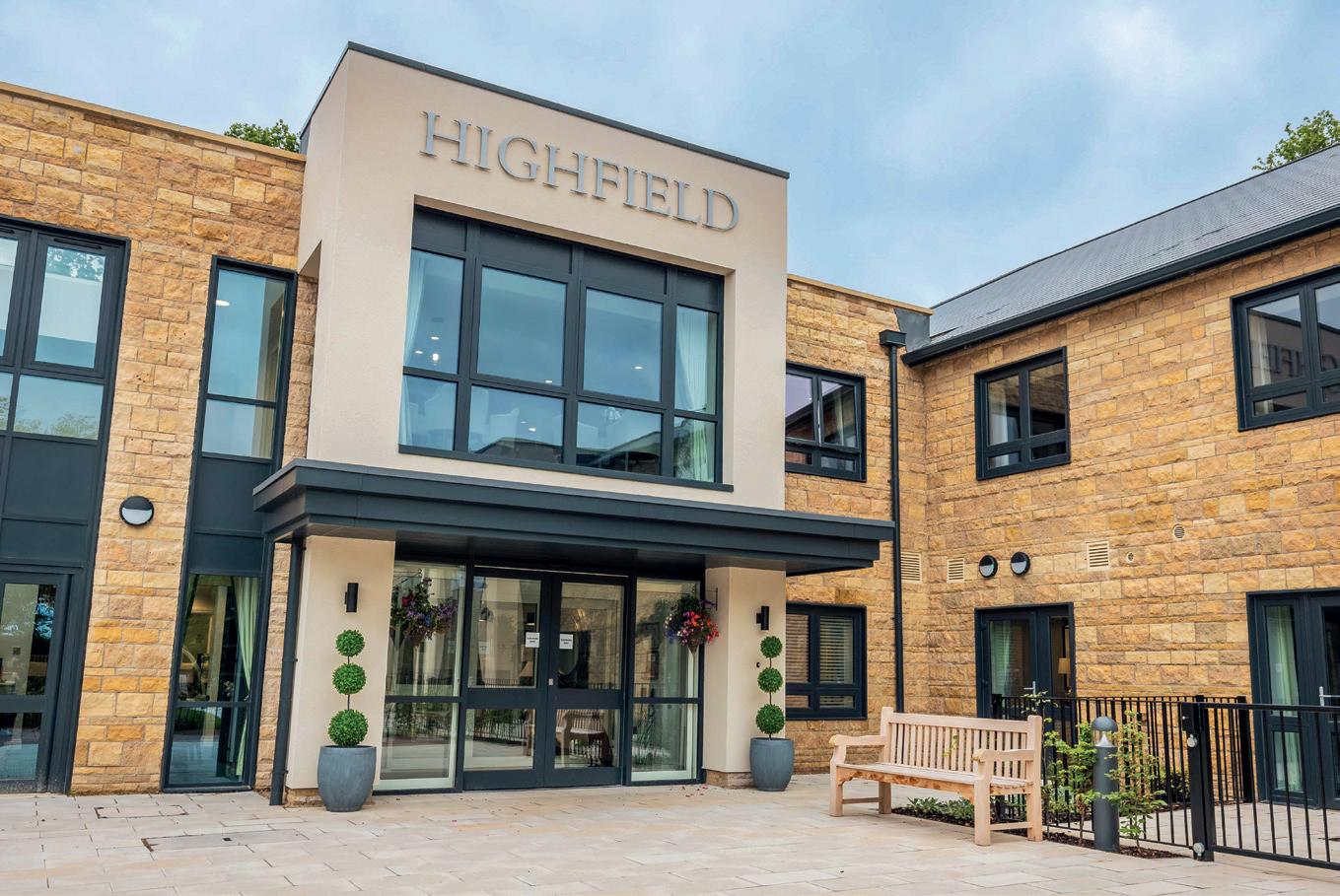
have been really important in every aspect of the design.”
Luke Owens, General Manager at Highfield spoke on the win and said: “The whole team here at Highfield and all our wonderful residents were absolutely blown away to win the award, we are all so proud of our gorgeous home, it really is the most beautiful place to live and work.”
Ben Garlick, Director at Harris Irwin, said: “The standard of entries in the prestigious Healthcare Design Awards is always impressive, and this year was no exception, with the bar raised even higher. The team at Harris Irwin Architects are honoured to have played such an important role in the design of Highfield and its success is testament to the strong partnership we have with Barchester Healthcare, working closely with them and the wider team to design and build exceptional care homes supported with our mutual passion, creative expertise, and experience in the care sector.”
With a prestigious award under their belt, we look forward to seeing what’s next for the Highfield care home team!

We pride ourselves on being the “good Sage guys to deal with”, having a team with decades worth of combined experience and the capability to manage the project in-house.
Say goodbye to complex income streams.
Report across multiple entities and locations.
Reduce human error with machine learning, automation and AI.
Automate repetitive accounting tasks. Process invoices and match to purchase orders.
Focus on growth objectives and strategic planning.
Users say Sage Intacct has made their roles easier, helped them make “smarter and faster decisions” and enabled them to have more impact.

Reliable real-time views, customisable reports, and dashboards.
Integrate financial and non-financial data.
Enhanced strategic planning and decision-making.
Eliminate on-premise risks. Frequent backups, automatic updates and 24/7 monitoring.
Seamless integration with other systems.

Scan to learn more or contact us at 01332 959 008 Email: sage@pkfscs.co.uk



Food waste is a significant issue in care homes, affecting budgets, sustainability, and overall efficiency. With residents having varying dietary needs and preferences, managing food consumption can be challenging. However, by implementing targeted strategies, care homes can significantly reduce waste while ensuring residents receive nutritious and enjoyable meals. Here are five effective ways to tackle food waste in care homes.
Understanding the extent and sources of food waste is the first step in addressing the problem. Your kitchen team should conduct regular waste audits to identify the most commonly discarded food items and assess portion sizes. This data can help in adjusting procurement, meal planning, and portion control to align with residents’ consumption habits. Tracking waste also raises awareness among staff and encourages a more mindful approach to food service.
Creating well-structured meal plans tailored to residents’ dietary preferences and nutritional needs can reduce waste significantly. Engaging residents in menu planning through surveys or focus groups can help in designing meals that are more likely to be consumed. Additionally, using seasonal ingredients and rotating menus can help optimise food usage while ensuring variety and freshness.
Many care homes serve standardised portion sizes that may not suit every resident’s appetite. Introducing a flexible portion control system, where residents can choose between small, medium, or large portions, ensures that food is not wasted due to oversized servings. Staff training on portion control and offering second servings instead of large initial portions can also contribute to waste reduction.
Proper food storage and inventory management can prevent spoilage and reduce unnecessary waste. You should look to implement a first-in, first-out (FIFO) system to ensure older stock is used before newer purchases. Additionally, monitoring expiration dates, properly labelling food items, and storing perishable items at the correct temperatures can help extend shelf life and minimise waste.
5 4 3 2 1
Despite best efforts, some level of food waste is inevitable. Setting up composting initiatives for organic waste can be an environmentally friendly way to repurpose leftovers. Additionally, if regulations allow, partnering with local charities or food banks to donate surplus food can ensure that excess meals benefit those in need rather than going to waste.

Changing the way you provide water can lower your energy bills and improve the wellbeing of your residents.
Ensuring elderly residents in care homes stay properly hydrated is essential for their health and wellbeing. As people age, their sense of thirst diminishes, making it easy for them to become dehydrated. This can lead to serious health issues, including urinary tract infections, confusion, dizziness, and even an increased risk of falls. Providing clean, filtered drinking water, in a sustainable way, is a simple yet effective way to promote better health and enhance the quality of life for care home residents.
Providing consistent hydration in a residential care home can be challenging. A study analysing hospital admissions found that 12% of care home residents were


dehydrated upon admission, compared to only 1% of those admitted from their own homes. This highlights the importance of being able to provide residents with plentiful and easy access to clean, filtered drinking water.
Water comprises of 55% of an elderly person’s body weight and staying hydrated offers numerous health benefits for senior individuals, so by allowing easy access to self-service water, caregivers can offer the best possible support to their residents. Proper hydration helps maintain cognitive function by reducing the risk of confusion and memory problems. Drinking enough water also helps the elderly by lubricating
the joints and eyes and supports better digestion and kidney function by preventing constipation and flushing out toxins. Adequate water intake enhances circulation and heart health by maintaining healthy blood pressure and reducing the risk of cardiovascular issues. Additionally, hydration strengthens the immune system, helping the body fight infections and recover from illnesses more efficiently. A simple glass of water can help to prevent fatigue and keeps residents feeling more alert and engaged in daily activities.
Safety and hygiene are essential, especially in communal areas where residents may have weakened immune systems. Borg

& Overström’s SensorBeam® technology enables touchless dispensing, minimising crosscontamination risks and ensuring the highest hygiene standards in care homes.
Residential care homes are increasingly prioritising sustainability by rethinking the way they provide drinking water. A drinking water dispenser is an ideal solution for care homes, offering a consistent and reliable supply of clean, filtered water, without the need for plastic bottles. Did you know that one water dispenser will eliminate 35,000 single-use plastic water bottles? This also removes the need to re-order, re-stock, store and refrigerate bottled water, allowing caregivers time to focus more on the residents and their wellbeing. Beyond reducing plastic waste, these dispensers optimise energy use with EcoMode technology, cutting energy consumption by up to 70% by entering a ‘sleep mode’ during periods of inactivity. Unlike traditional beverage fridges that run continuously, these intelligent
systems help lower energy costs and reduce carbon footprints. Borg & Overström dispensers also help care homes fully align with Environmental, Social, and Governance (ESG) objectives by promoting access to clean water and encouraging responsible consumption.
Access to clean drinking water is essential for wellbeing, yet many care home residents face challenges in pouring a drink due to limited mobility or dexterity. At Borg & Overström, we understand the importance of easy hydration. Our T2 and T3 integrated tap systems feature accessible buttons at the base, allowing users to safely dispense chilled or hot water without lifting or pouring. This intuitive design promotes independence, ensuring all residents can stay hydrated comfortably and effortlessly.
Often placed in communal lounges, kitchens or even in corridors, water dispensers ensure that both residents and care givers have easy, limitless access to clean drinking water.
Borg & Overström water dispensers and integrated tap products are specifically designed to meet the needs of care homes. The NHS Technical Bulletin (NETB) No. 2024/3 outlines essential guidelines for safe drinking water in healthcare settings, and to address this, Borg & Overström developed the E6 Chilled-only dispenser, designed for maximum hygiene and safety. Their advanced filtration systems ensure high-quality drinking water while their energy-efficient design helps reduce operational costs and helps towards ESG goals. Additionally, their user-friendly interfaces make them suitable for elderly residents, ensuring hydration is always within easy reach.
By investing in a reliable, energyefficient drinking water dispenser, care homes can significantly enhance the wellbeing of their residents while promoting a sustainable and cost-effective hydration solution. Keeping the elderly hydrated with clean, filtered water is a crucial step in supporting their health, happiness, and overall quality of life.
borgandoverstrom.com
We explore why ethical sourcing is essential in the care sector, the challenges faced by care homes in implementing responsible procurement practices and practical steps they can take to make a positive impact. By prioritising ethical suppliers, care homes can enhance the quality of life for residents, support fair labour practices and contribute to a more sustainable future.
Ethical sourcing is becoming an increasingly important consideration in care homes, where the quality of goods and services directly impacts the well-being of residents. From food and medical supplies to furniture and cleaning products, care providers must ensure that their purchasing decisions align with ethical, sustainable and fairtrade principles.
Running a care home requires a constant supply of energy to provide residents with heating, lighting and essential medical equipment. Matt Warner of Convert Energy acknowledges that this high energy demand presents an opportunity to adopt more sustainable practices, and solar power is one of the most effective solutions. By generating clean electricity on-site, care homes can reduce their reliance on fossil fuels, lower greenhouse gas emissions, and improve energy security. Solar panels not only cut costs but also demonstrate a commitment to environmental responsibility, benefiting both residents and the wider community.
Looking into how much a care home can typically reduce its carbon footprint by installing solar panels, Matt said, “The reduction in carbon emissions depends on factors such as location, energy consumption, and system size. On average, a care home that installs a 50kW solar panel system can reduce its carbon footprint by approximately 20–25 tonnes of CO2 per year. This is equivalent to

taking about 4–5 cars off the road annually or planting hundreds of trees. The more a care home relies on solar power, the greater the reduction in emissions, making it a significant step towards sustainability.”
With care homes operating 24/7, this leads to high electricity consumption. Installing solar panels can significantly cut energy costs, with potential savings of 30% to 60% on electricity bills, depending on factors like system size and local energy rates. Additionally, under the government-backed Smart Export Guarantee (SEG) scheme, care homes can earn money by selling excess electricity back to the grid. This allows them to maximise financial benefits by ensuring that surplus solar energy doesn’t go to waste, further improving return on investment.
Gary Marshall, Marketing Manager at Adveco, recognises that sustainability encompasses a broad range of functions across
the care home sector, from the bricks and mortar construction to daily operational demands. As a hot water specialist for more than 50 years Adveco’s focus is how they can take not just new, but the many existing buildings to a point where sustainability can be actively demonstrated. Gary said, “For us, that means best addressing the type of energy used and reducing the energy required to meet business-critical hot water demands for tangible carbon emission reductions - all without impacting daily operations or incurring costs that prevent the forward movement of sustainable business strategies.”
Gary explained how lighting, heat and hot water are necessities. They are also a key contributing factor to the release of carbon emissions from care home building stock accounting for 40% of annual emissions. Water heating alone represents as much as 30% of a building’s daily energy
demands. This demand increasing as resident numbers climb, and care provision evolves. This has become particularly apparent with the desire for self-contained single-room bed spaces that include en-suite bathrooms, and the preference for wet rooms, which increases the demand for hot water. The addition of onsite kitchen, laundry and general demands for regular cleaning all add to the demands. Whilst new builds make consideration for such evolving demands as part of the current building regulation, the majority of care homes are pre-existing and many will be overdue for renovation.
Gary said, “Of the current 17,000+ UK care home properties, only around 14% were constructed after 1996, and 80% of all buildings are still expected to be in use in 2050. However, factoring sustainability into older properties is complex and costly. This is especially true when addressing space heating which can require the building to be adapted in terms of insulation, ventilation, energy supply, pipework and heat emitters.
“This is the most significant challenge facing care home operators wishing to formulate net-zero strategies. There is a silver lining. When water heating reaches a scale seen in mutiresidential properties (requiring a defined plant room space) it is essentially a separate system that requires little, low-impact alteration
to the building’s fabric, pipework or energy supply for meaningful carbon savings. This means, despite the apparent system complexity, it remains one of the most costeffective means of introducing sustainability in terms of capital investment and running costs.”
The team at Allmanhall believe that client and supplier relationships should be established on fairness, integrity, longevity, and mutual respect. All food procurement providers should expect their suppliers to uphold these same values and to commit to bring about transparency within their supply chains. This means that you can easily appreciate what lies behind your food from a social and environmental perspective to the same extent as quality, cost and taste.
However, transparency can be challenging to determine when meals could contain components from all over the world, for example cocoa. How can you be sure that the chocolate in your devil’s food cake has not been grown and picked using child labour? Tony’s Chocolonely is one of very few chocolate manufacturers to be completely transparent about their supply chain. They aren’t, however, the only option for ethicallysourced chocolate – choosing a Fairtrade certified manufacturer will give you peace of mind because they work with farming co-operatives, businesses and governments to make trade fairer.
Nestle have been using 100% certified sustainable cocoa in the UK & Ireland since 2015, although they moved from Fairtrade to Rainforest Alliance certification in 2020. Nestle wanted to ensure that farmers receive a fair price for their cocoa, and that they were tackling key social and environmental issues including child labour and deforestation – aims that they felt were best matched by the mission and goals of Rainforest Alliance.
In the value chain, farmers, their families, and their communities should all benefit from their association with the company manufacturing your ingredients. Shortening your supply chain, wherever possible, will enable you to gain greater transparency and visibility of your product sourcing. Goods supplied with the lowest environmental impact will optimise your ethical and sustainable sourcing. What is a sustainable food system? One that protects its productive source functions –improved water catchment, soil quality, ocean health & habitats etc. – but does not overwhelm or exploit sink functions (an environment’s capacity to absorb and render harmless waste and pollution) – reduce soil erosion, minimise water pollution, reduce food waste. By decarbonising all aspects of food production, living within our planet’s boundaries, and distributing its nutrients fairly, everyone benefits.
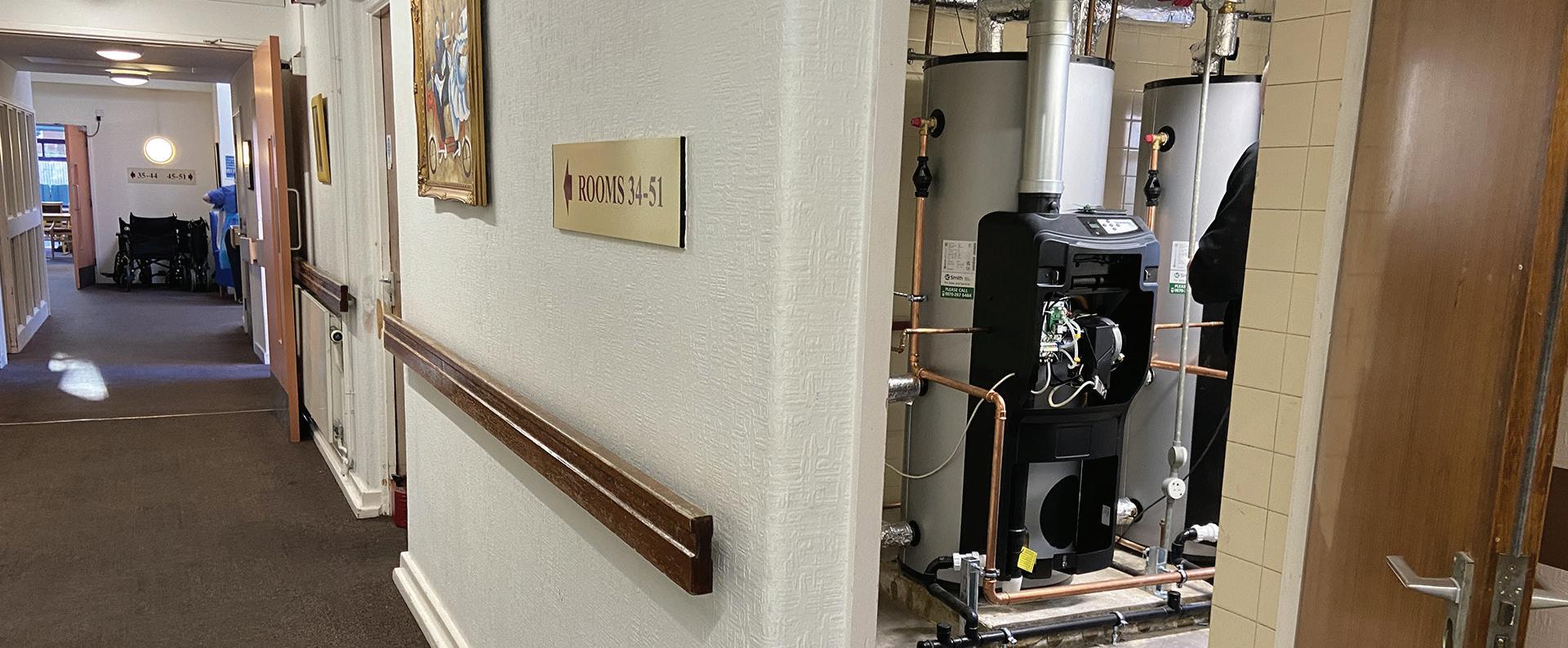

Therefore, tackling the impacts of climate change should be fundamental to any food procurement provider’s operations and supply chain as our food industry both contributes to and is vulnerable to its effects.
Bringing transparency to your supply chains, with the support of an expert food procurement specialist, will empower your catering team to help bring about transformative change. This is fundamental to helping make the 17 United Nations Sustainable Development Goals a reality, and to address the interconnected social and environmental challenges facing our global food systems and planet.
Mike Meek, allmanhall’s Procurement & Sustainability Director, explains why this all matters:
“How we produce food and what we eat has immense implications for the environment, the economy and human well-being. Responsible production and consumption are vital as we look to transform our food systems by protecting our
planet whilst at the same time ensuring nutritional and food security.
Initiatives like the UN Global Compact, and third-party ESG assessments like EcoVadis, provide a common goal to help bring about this transition.
EcoVadis brings a necessary transparency and accountability, hence why allmanhall’s recognition by this universal sustainability ratings & intelligence solution is so meaningful.”
EcoVadis is the world’s largest provider of business sustainability ratings enabling organisations to reduce risk, drive improvement and accelerate positive impacts on our planet and society. The EcoVadis sustainability assessment methodology is at the heart of its Ratings and Scorecards. It is an evaluation of how well the principles of Sustainability/CSR are integrated.
Following its annual sustainability assessment in November 2024, EcoVadis has recognised allmanhall as ‘Gold Rated’.
Mike added, “This international
rating system which covers ethics, sustainability and governance puts allmanhall on the 98 percentile of global businesses assessed.”
To help balance cost considerations, you should use an expert procurement company to leverage your supply. In this climate of extreme financial pressures, care homes need to be agile to deliver the best food offer they can, ensuring they are receiving value for money as well as ethical sourcing.
For example, an expert food procurement solution will deliver both cost savings and insight by providing a catering controls platform to track and manage every penny of spend, stock audits and wastage.
Engaging a food procurement provider gives a care home valuable cost impact assessments, which help to bridge the gap between sustainability and financial prudence.
Hayden Hibbert, allmanhall’s client relations director, explains that “With a sustainable and responsible approach to food procurement,

care homes can significantly reduce their catering operations’ carbon footprint through practical and cost-effective methods”.
Firstly, use carbon impact assessment technology such as Foodsteps for your recipes and menus – this removes some of the complexity of measuring supply chain emissions and can aid ethical sourcing.
When looking to reduce the planetary impact of your residents’ meals, swap out red meat for cheaper plant-based alternatives to make a big difference without compromising taste. Ruminant alternatives are likely to make better use of your budgets too, as they are often a more cost-effective version.
Russell Pillar, Interiors Consultant & Founder at Interiors by Amara Hammond, notices that while some large care home groups are leading the way on sustainability, driven by corporate ESG initiatives, it’s fair to say that the topic is not top of mind for many at operator-level. “Patient care, practicalities and cost tend to eclipse eco-credentials, but it is not a topic that can be ignored for long - especially with the CQC
expected to introduce mandatory requirements in this area,” Russell said.
Russell recognises that there needs to be wider recognition that a sustainable environment is a healthier environment. “Air quality, for instance, was in the spotlight during the pandemic and its impact on the health and longevity of care home residents should not be underestimated. It is hard to banish chemicals and associated toxins from an environment that needs to be antimicrobial, fire retardant to the highest level, robust and easy to clean – but more products are coming onto the market that contain fewer volatile organic compounds (VOCs) and are recyclable, from fabrics to even the artwork that is displayed in a care home.”
Sileather, for instance, pioneers innovative materials that conserve resources and protect the wellbeing of people and planet. Its silicone fabric is inherently fire-retardant, and can be used for upholsteries, wall panels, and other interior surfaces.
When it comes to chairs, Russell explained that he is seeing
products such as Revyva being used across the back of the chair, made from 100% recycled plastic bottles, inherently compliant to Crib 5 & IMO Part 8.
“These products make a huge difference and are a step in the right direction for the sector. It also helps that regulations and certifications are becoming more commonplace, for instance the Global Recycled Standard that guarantees the chain of custody and therefore the products’ ecocredentials,” finished Russell.
Incorporating ethical sourcing and sustainable practices into care homes is essential for improving resident wellbeing, reducing environmental impact, and ensuring long-term financial viability. From renewable energy solutions like solar power and efficient water heating systems to responsible food procurement and ecoconscious interior design, every aspect of care home operations plays a role in sustainability. While challenges remain, expert guidance, innovative technologies, and evolving regulations provide pathways to meaningful change.
Food procurement specialists, allmanhall reveal all.
Fresh food comes from all over the world, year-round, but is that actually good for your residents?
Consider the humble spring onion. Most are imported from Thailand, meaning they have travelled around 5,900 miles to get to your residents’ plates. This clearly has an environmental impact - especially if they’re airfreighted.
However, the concept of food miles argument is too simplistic, and an air-freighted spring onion is more sustainable than one grown out of season in a British hot house. Picking the right sources for your spring onion depends on the time of year.
However, when it comes to the quality of that imported spring onion, that’s a different story, because by the time your residents
eat it, it could be weeks old.
Vegetables tend to be picked at the peak of their ripeness and at their peak nutritional value. That little spring onion has travelled for days, even weeks, to get to the point of being eaten, so it has started to age.
This aging causes the spring onion to lose its nutritional density, so your residents won’t get the same nutritional benefits as if they had eaten it freshly picked. And it’s not just a small deterioration. A 2004 US study found that important nutrients in some vegetables are now up to 38% lower than in 1950.
Older people tend to have smaller appetites, so it is of utmost


importance that everything your residents eat is as nutritionally dense as possible.
When you base your menus on food that is in season you increase the nutritional density of their meal.
• Learn what is in season and when. Speak with the allmanhall team so that we can help you stay informed about seasonal produce.
• Use cookbooks based on seasonal eating. This takes the stress out of creating dishes with unfamiliar ingredients.
• Ensure you provide variety. The more diverse the diet, the more diverse the nutrients will be!
allmanhall are food procurement experts - our role is to transform supply chains, providing information that enables you to make decisions. Leaving you in control but with support and savings from our expert team, allmanhall can advise about the most seasonal produce.
Nutritious, sustainable and costeffective food? That’s welcome all year round!


allmanhall is an owner-managed and award-winning food procurement partner for care homes, care groups and healthcare establishments across the UK. We specialise in supporting in-house catering teams.
9 Food cost savings and risk mitigation
9 Enhanced quality and retained flexibility
9 Admin efficiencies and greater visibility
9 Consolidated billing - fewer invoices
9 Hands-on support and consultancy
9 Allergen, nutrition and compliance training
9 Sustainability assessments and advice

“ From day 1, the care and attention provided by allmanhall has been exceptional. The team truly listen to us, to what our challenges are and are always willing to help in any way they can... ”
allmanhall.co.uk


Forbes helps care homes meet ESG targets through sustainable partnerships.
Sustainability is no longer just a corporate goal - it’s a necessity. For care homes, meeting Environmental, Social, and Governance targets can be particularly challenging whilst balancing financial pressures and maintaining high standards of care. Partnering with responsible suppliers is key to achieving these goals. At Forbes Professional, we provide sustainable, energyefficient, cost-effective appliance solutions that helps care providers reduce their environmental impact whilst enhancing operational efficiency.
Choosing rental over outright purchase is one of the most immediate ways that care homes can embrace sustainability. A rental model extends the lifecycle of appliances, reduces waste, and supports the circular economy by ensuring equipment is repaired, refurbished, and reused rather than discarded. This approach minimises electronic waste, ensures WEEE compliance and gives care homes access to the latest technology without costly upfront costs.
Care homes require reliable, high-performance laundry and dishwashing equipment but older or inefficient machines can consume excessive energy and water, increasing both costs and carbon footprint. Forbes Professional supplies energy-saving solutions such as heat pump dryers, which reduce energy consumption by up to 65% compared to traditional dryers. These innovations help facilities lower utility bills while significantly decreasing their carbon emissions.
As a national partner for Miele, a company renowned for its sustainability commitments, Forbes Professional ensures care homes have access to cutting-edge, resource-efficient appliances that align with ESG objectives. From low-energy washing machines with automatic detergent dosing (reducing waste and water usage) to dishwashing solutions designed for maximum energy efficiency, every product is selected with sustainability in mind.
By choosing energy-efficient, sustainable rental solutions, care homes can achieve:
• Lower operating costs through reduced energy and water consumption
• Enhanced equipment reliability with expert servicing and maintenance
• A reduced environmental footprint through circular economy practices

Care homes can make significant progress toward their sustainability targets by working with suppliers who share their values. Forbes Professional prioritises ethical sourcing, sustainable logistics, and waste reduction strategies, ensuring our entire supply chain aligns with our principals.
Beyond environmental benefits, Forbes Professional is committed to supporting equity, diversity, and inclusion within our organisation and in the wider community. We collaborate with charities and local initiatives that help create positive social impact, reinforcing our role as a responsible business partner.
At Forbes Professional, we help care providers future-proof their operations, ensuring they can meet their ESG commitments without compromising on care standards. A sustainable approach doesn’t just benefit the environment - it creates cost savings, operational efficiencies, and a more responsible way of doing business.
Care homes looking to align with a sustainability- focussed partner can make an impact by choosing a rental model and adopting energyefficient solutions with Forbes Professional.
forbespro.co.uk
info@forbes-professional.co.uk 0345 070 2335


Date: 24th April 2025
Time: From 4pm
Venue: The Oaks Care Home, 150 Rubery Lane, Rubery , B45 9AY
Join us for an exhilarating evening of Firewalking and Lego
Walking to support The Care Workers’ Charity. Challenge yourself for a great cause!
Walk across hot coals and feel the rush of accomplishment! Fundraising Target: £300
All proceeds go to support The Care Workers’ Charity, helping those who care for us. Sign up today and be part of an unforgettable experience!
For more information and to register, visit: https://www.thecareworkerscharity.org.uk/event/the-careworkers-charity-fire-experience-2025/




Intracare
benjones@intracare.co https://intracare.co Intracare Ltd

Care Supply Store
01375 651 609

www.caresupplystore.co.uk @caresupplystore Care-SupplyStore-708536899310571 care-supply-store

JDE Professional UK
0808 100 1030
www.jacobsdouweegberts professional.co.uk

allmanhall
01225 745520
hello@allmanhall.co.uk www.allmanhall.co.uk allmanhall
REM 01282 619977


sales@rem.co.uk www.rem.co.uk @remuklimited remuklimited rem-1

Gillman’s
0800 014 1474
commercial@gillmans.co.uk www.gillmans-commercial.co.uk

@gillmans_appliances gillmansappliances gillmans-commercial-laundry


Girbau
01462 427780
sales.uk@girbau.com www.girbau.com Girbau girbau-uk
Miele
0333 230 1347
professional.sales@miele.co.uk www.miele.co.uk/pro/care miele-professional

EF-group
07837 212719
stevewalker@ef-group.co.uk ef-group.co.uk/healthcare ef-group-social
August International
01920 487700
audarhealth@augustint.com www.audarhealth.com/home/ carehome

@august_lab
AugustInternational august-international





